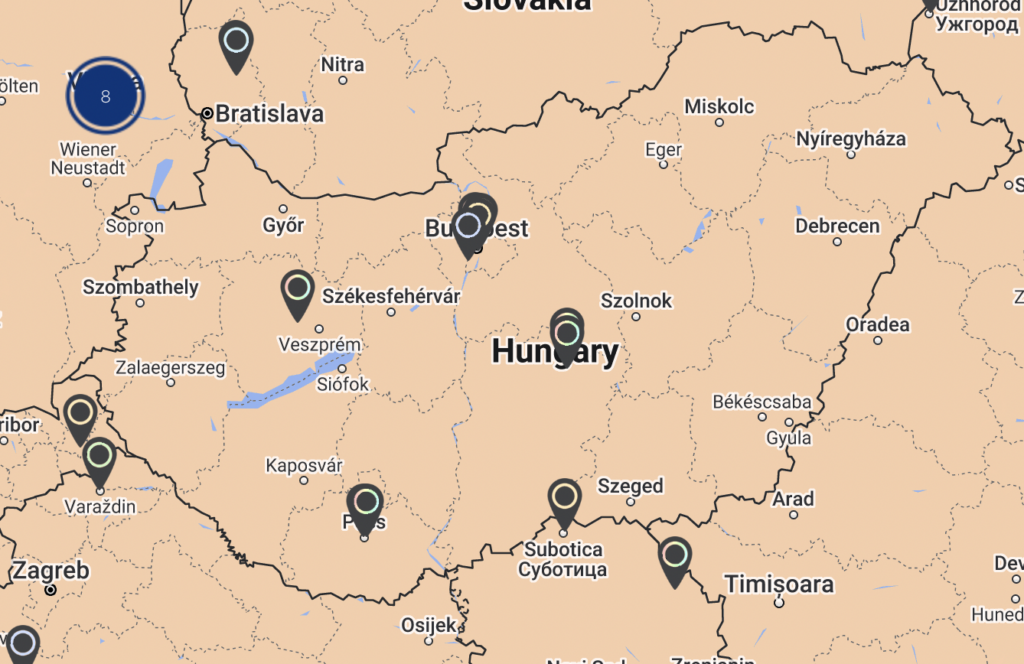
To see all the destinations listed in this guide and other ceramic sites in Hungary, check out CERAMIC WORLD DESTINATIONS (CWD), MoCA/NY's interactive map listing over 4,000 ceramic destinations!
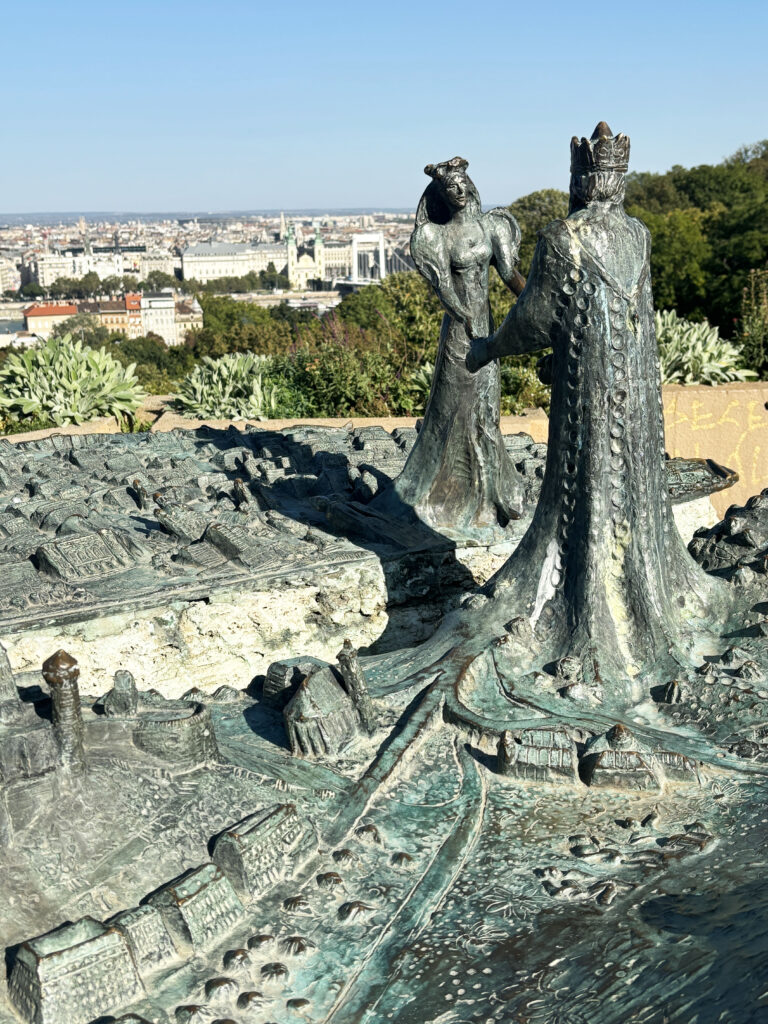
In Hungary, clay takes many forms: Herend porcelain is renowned for being flawlessly white, while colorful folk wares display motifs that traverse the applied arts. Black pit-fired pottery, banded with rusting wire, contrasts with pálinka bottles, adorned with flowery sgraffito poems that cheekily describe their contents. Zsolnay’s luminescent eosin home goods and pyrogranite architectural innovations provided the means for Art Nouveau to flourish. Custom handmade dinnerware serves Michelin-starred food, while mosaics in bathhouses, obscured by mineral deposits, tell their own stories. Sculptures first announced, then renounced the Communist reign, reflecting Hungary’s complex history. Old and new, East and West, Buda and Pest—beauty upon beauty, all drawn together by the Danube. You are invited to stay far longer than 72 hours, but here is your beginning.
Airbnb offers reliable accommodations in Budapest. If available, I recommend a unit in an apartment building with a courtyard. The balconies along this communal inner sanctum bloom with life: houseplants, laundry, tricycles, patio furniture, chatting neighbors, sunbathers, and even jars of fermented vegetables. Just beware of the potential for an unpredictable number of steps in a sometimes dimly lit (but safe!) stairwell.
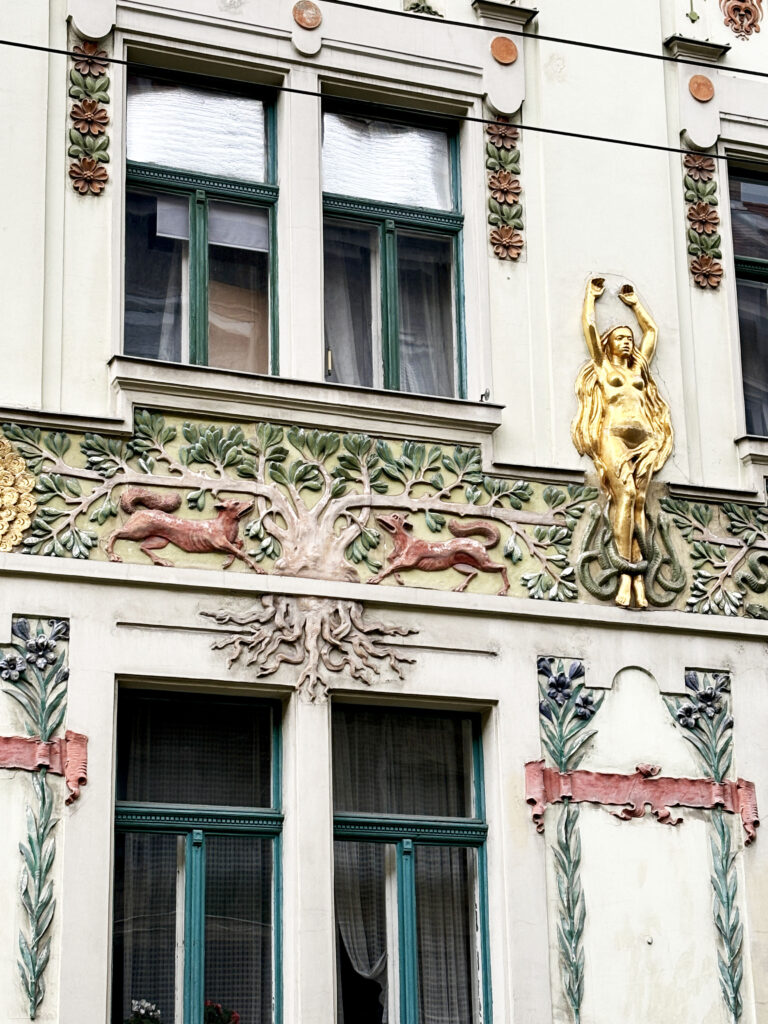

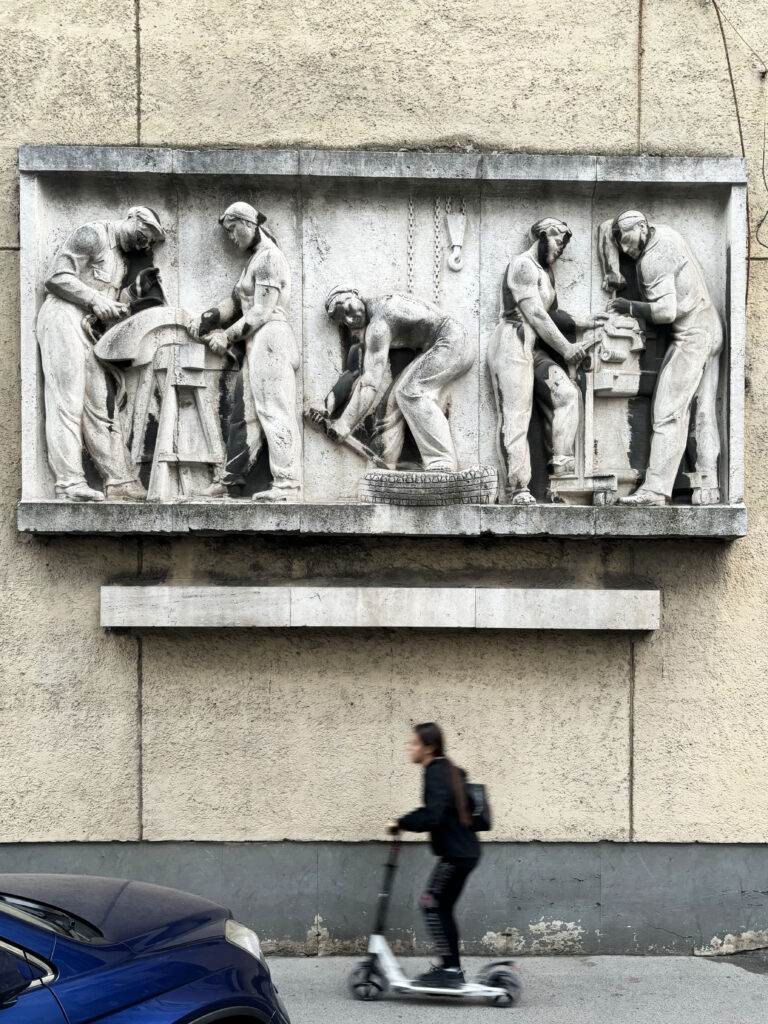
The best way to see Budapest is on foot. It is a manageably sized, pedestrian-friendly city. An aside: nobody jaywalks. As an East Coaster, I had to fight the urge to cross an empty street, but take the opportunity to pause and appreciate your surroundings. You will be rewarded with a moment of art—a memorial plaque, a mural, an architectural highlight, or public art. Budapest is a city of decorative details everywhere.
Public transportation (metro, trams, trolleys, buses) is an excellent option as well. It’s affordable, fast, and far-reaching, and Google Maps will reliably direct you to any destination. While you can purchase paper tickets, I encourage downloading the BudapestGO app to manage all your tickets. For the least worry, consider purchasing one of their unlimited multi-day fare options.
Taxis are also available, either via Bolt through their app or Főtaxi through Uber. For airport travel, the 100E airport express bus runs frequently and directly between downtown and the airport.
8 AM: Coffee and pastries(advised for each morning!)
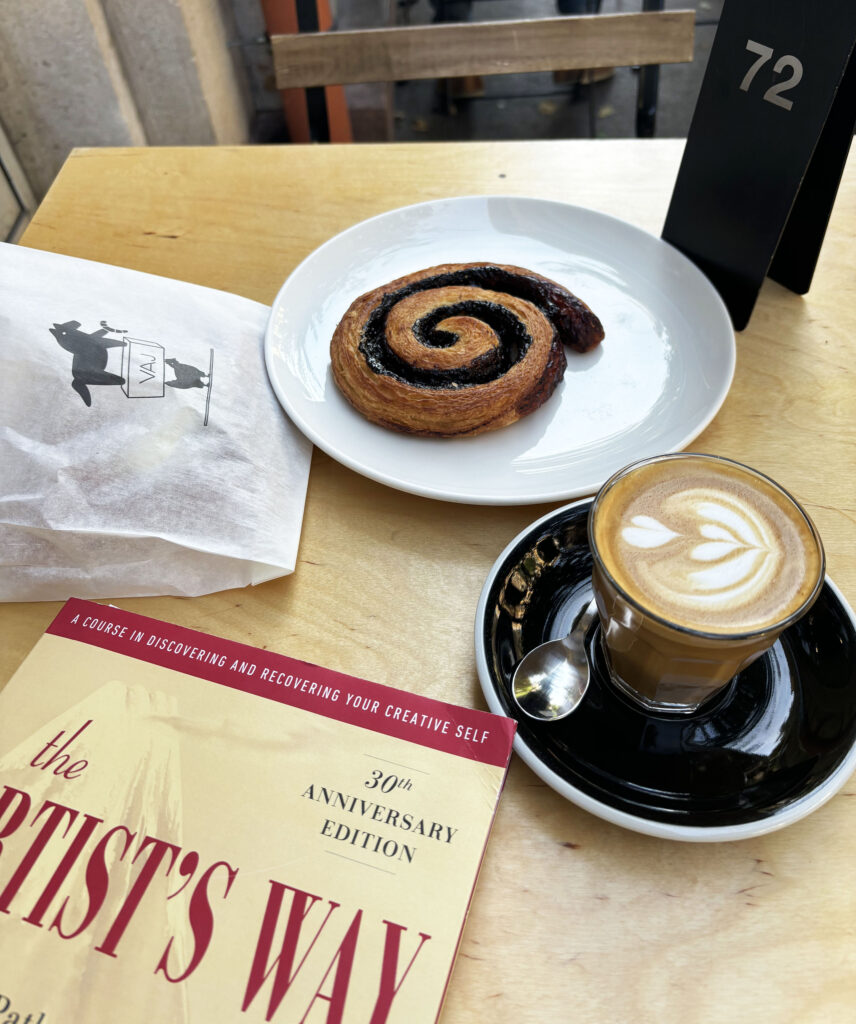
Long known for its café culture, Budapest offers excellent specialty coffee everywhere. Depending on your location, any of these top-rated café-bakeries are an ideal way to start your day. Recommended traditional pastries include the kakaós csiga ("chocolate snail"—like a chocolate croissant, but with a better chocolate-to-dough ratio); the túrós batyu (a dough "bundle" filled with sweet cheese); and rétes (strudel).
9:30 AM: Buda Castle / Royal Palace
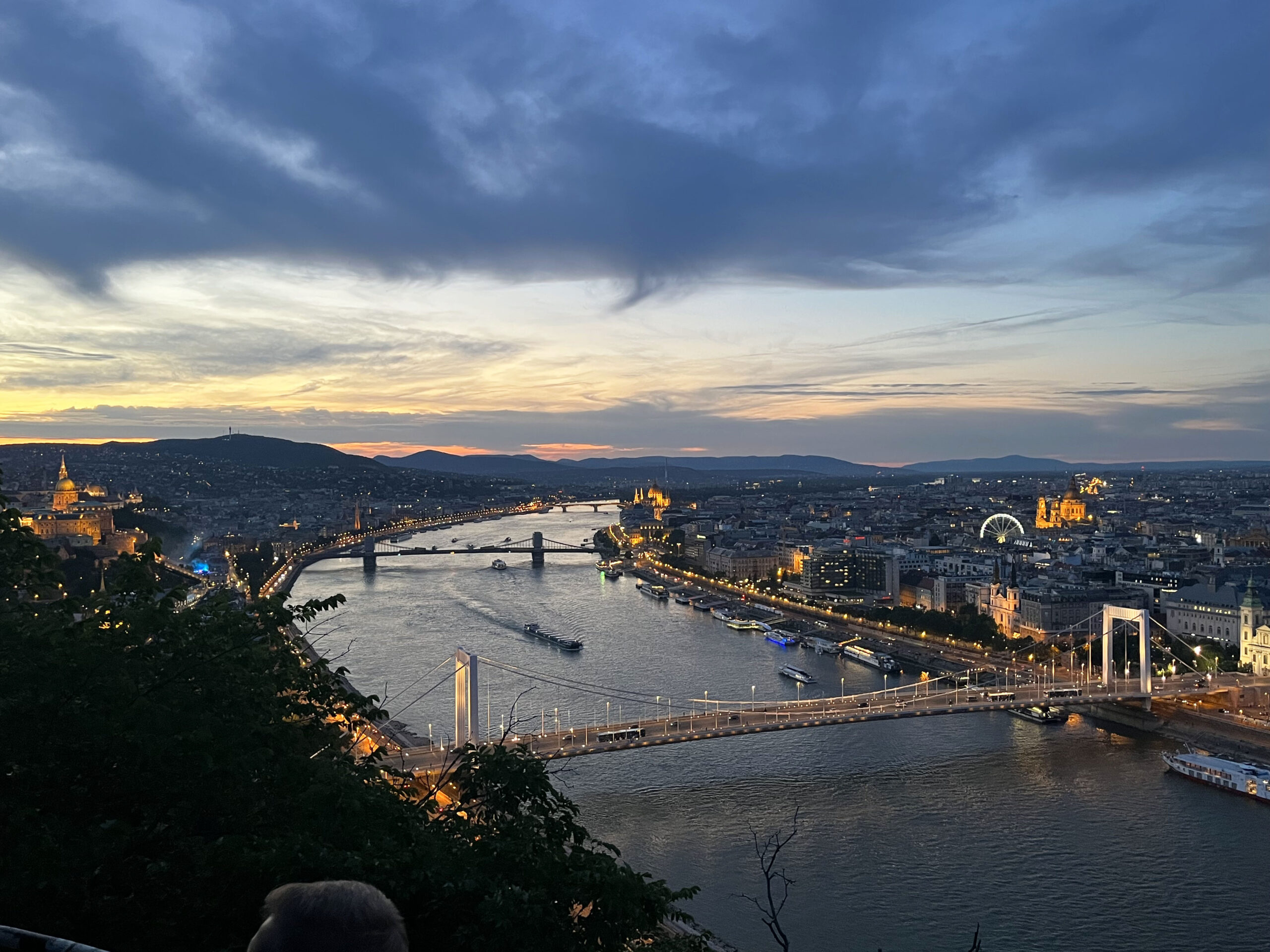
A bird's-eye view as your first impression of Budapest will establish your bearings and anchor your appreciation of the city's beauty. What makes the view particularly breathtaking? Although it may feel as if Pest is laid out below you, interestingly, Pest rises as high as your vantage point in the Buda hills, though not until far out in the distant Tenth District. This gradual incline creates a panoramic, semi-circular theater angled to meet your gaze. Take note of the colorfully tiled roofs: many were designed by Ödön Lechner, the revered architect of the Hungarian Secession (Art Nouveau) style, made possible only by the technological innovation of Zsolnay's weather-resistant pyrogranite ceramics. Look across Pest for the green and gold roof of Lechner’s most famous Postal Savings Bank. Nearby, Fisherman’s Bastion and the Citadella on Gellért Hill also offer these grand views if you wish to return for a nighttime vision of the city, where the lightscape becomes the landscape.
Consider this: The beauty of Budapest is even more astounding, as with much of Europe, when you think about the city's rebuilding following the destruction of WWII.
10 AM: Magyar Nemzeti Galéria / Hungarian National Gallery
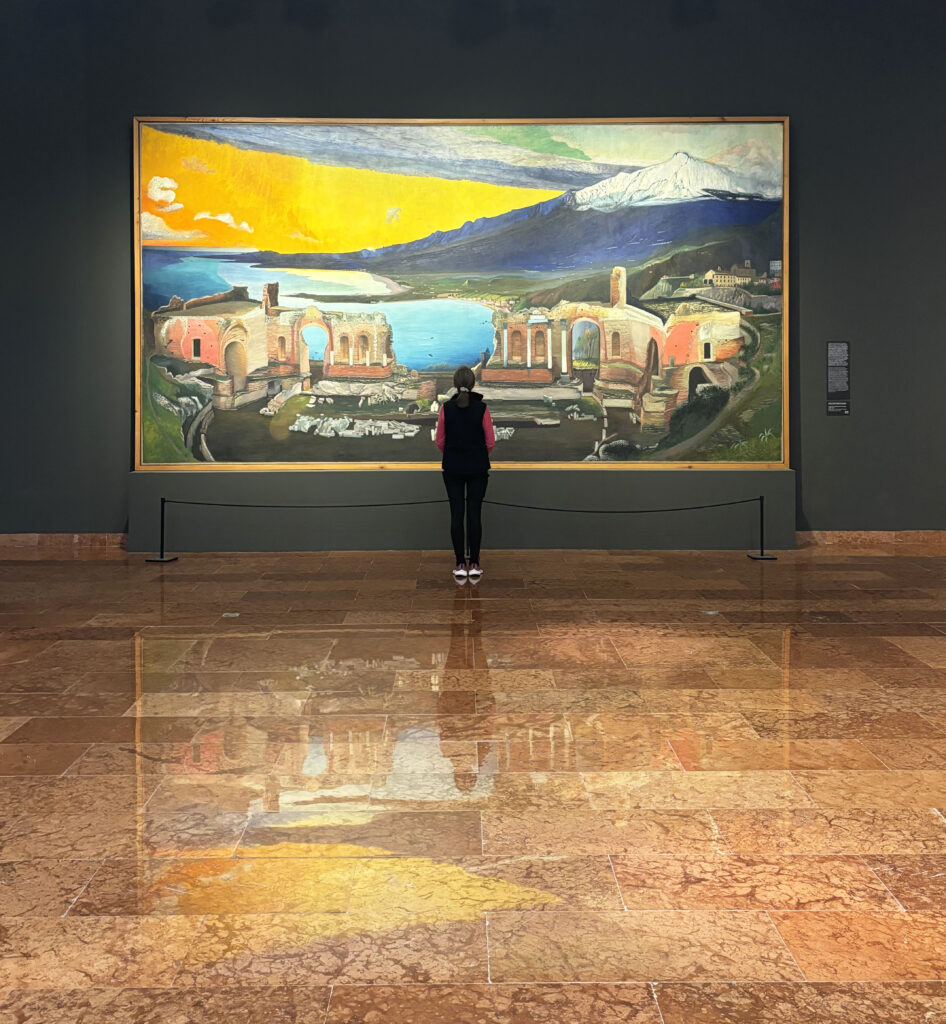
As gazing over Budapest offers you an understanding of the city, this museum offers you an overview of the Hungarian artscape: it features Hungarian art from the 10th century until the present, masterworks of folk to fine arts. While their collection does include international artists, the draw is certainly the Hungarian vision. Personal favorites include the nearly 20 square meter painting, Tivadar Csontváry Kosztka’s Ruins of the Greek Theatre at Taormina (1904/05); and Pál Pátzay’s “Danubian Wind” (1934).
A bonus: if you ascend to the top of the building’s interior, the Dome Terrace offers 180º views of the city. And for the artist-engineers, an appreciation of vintage window mechanisms—a reminder to look at all the details in Hungary, where old integrates with new.
1 PM: Lunch at Aranyszarvas Étterem / Golden Deer Restaurant
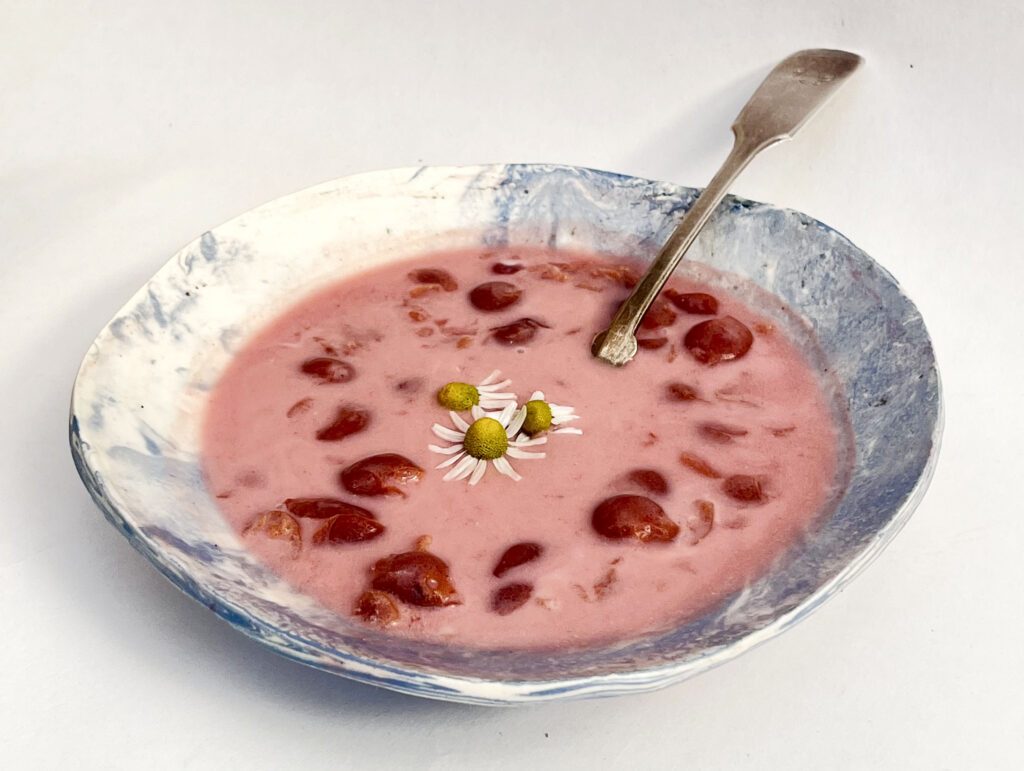
Walk down from the castle to this traditional Hungarian restaurant, and if the weather agrees, dine on the patio. If “hideg meggyleves” (cold sour cherry soup) is on the menu, you must try it!
Hold off on dessert, as your next stop will be the nearby patisserie Asztalka Cukrászda for delectable cakes (the shop's interior is equally sweet). I recommend keeping your meals light, as up next is the bathhouse, where it’s healthier to visit on an empty stomach.
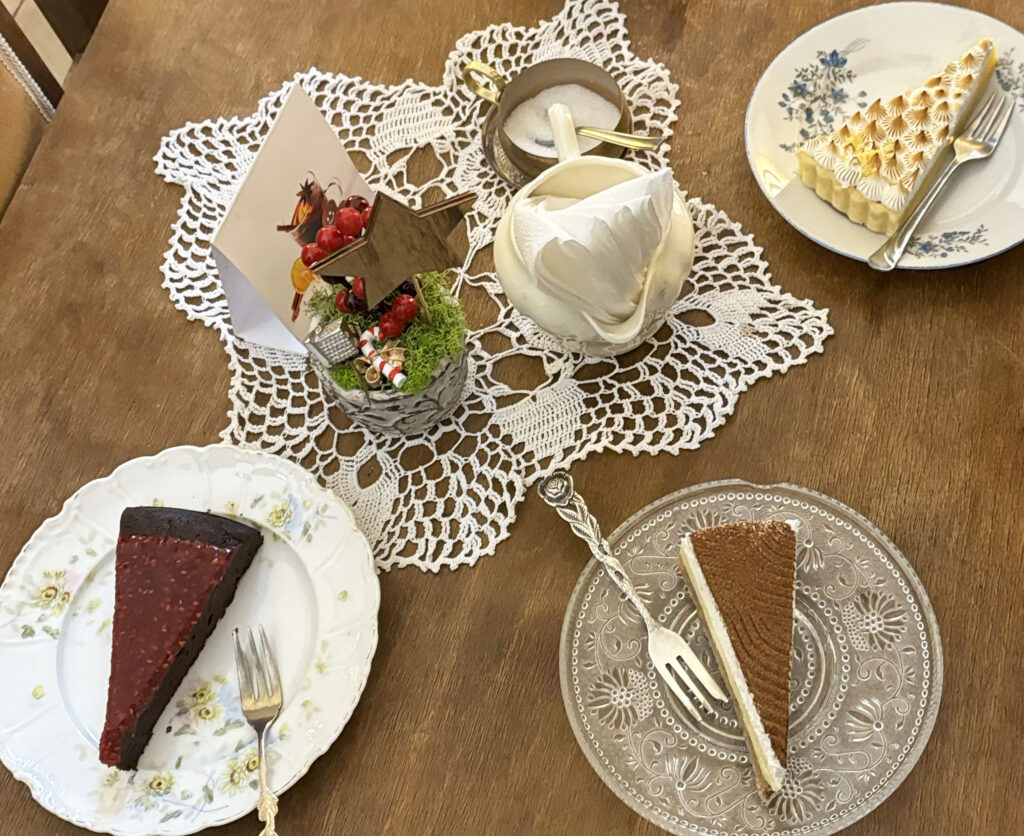
3 PM: Gellért Thermal Baths

A twenty-minute stroll along the Danube will lead you to this Art Nouveau masterpiece of geothermal delights. While each bathhouse in Europe’s City of Spas has its unique draw, Gellértis a must-see for ceramicists. The opulence, the scale, the lighting, the acoustics—despite the crowds, there is something sacred and subdued here, as if one were within a temple to bathe. You will encounter ornately tiled columns, Zsolnay mosaics, stained-glass windows, and playful ceramic sculptures laden with deposits from over 100 years of mineral waters, as if their glazed surfaces were reglazed by nature.
Not to mention the living sculptures: one of the great joys of a public bathhouse, beyond the man-made splendor, is the rare and intimate opportunity to marvel at the beauty of the human body in all its natural iterations—young, old, large, small, male, female, and everything in between. All so different, all so similar, all so beautiful. One final note: an insight into Hungarian healthcare—with a prescription from one’s doctor, the bathhouses are subsidized, whether for massage, hot/cold/mineral soaks, or swimming. Hydrogeology, art, medicine, and history all commune under one architectural wonder of a roof.
Bonus: Gellért’s outdoor section features a wave pool during the summer, as well as a large soaking pool higher up within the complex. It’s a lovely way to experience sunset—and the mesmerizing nightly migration of Budapest’s handsome hooded crows to their evening roost.
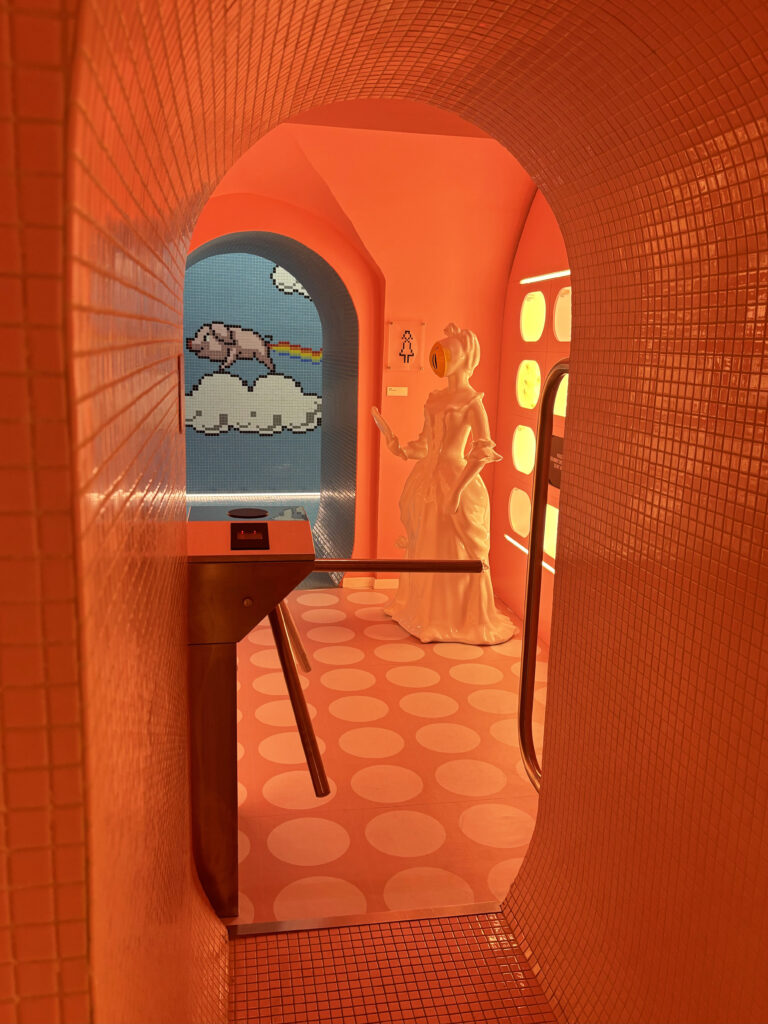
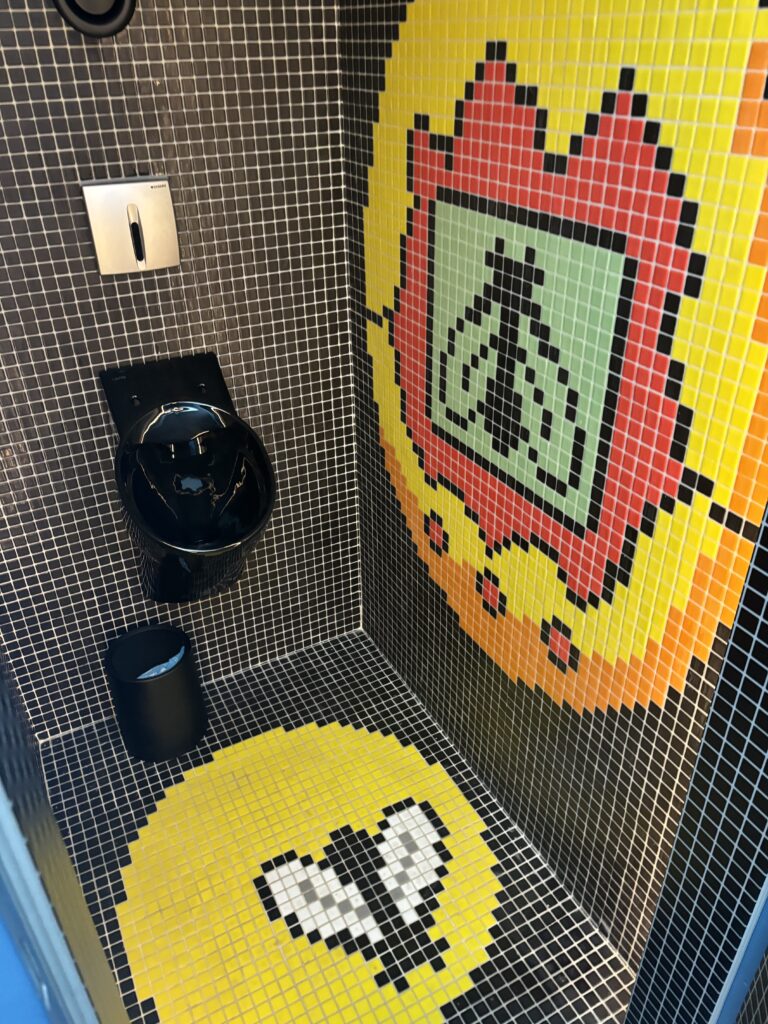
6 PM: Return to Pest - Pop & Roll Art Gallery
If you feel like walking in your relaxed and blissful state, traverse the Szabadság Híd (Liberty Bridge) into the city center of Pest. En route to dinner, stop by Pop&Roll Art Gallery to ponder the evolution of Hungarian mosaics. With Gellért fresh in your mind, descend into the cheeky contemporary neo-pop tile installations of artist Miklós Kiss. It’s one vision of the future of the art world.
7 PM: Dinner at Retek Bisztró
Beyond the fantastic Hungarian food inspired by grandmothers’ meals, Retek will charm you with its relaxed yet sophisticated interior. The vibrant decor showcases the vibrancy of vintage Hungarian design and mirrors the colorful presentations of delicious meals on well-paired dinnerware. You’ll feel at home, yet elevated. Hortobágyi pancake and Lecsó are quintessential traditional Hungarian foods; Retek does them very well. Reservations are recommended.
9 PM - Night Out
If you have the energy, attend a táncház, a gathering for live folk music, folk singing, folk dancing, folk arts. Two favorites include Fonó on Wednesdays, Fridays, and more. And Saturday nights at the Hangyományok Háza / Hungarian Heritage House. Alternatively, stroll along the Danube and cross the Széchenyi Lánchíd / Chain Bridge at night to view the city in its well-lit glory.
8 AM: Nagycsarnok / Central Market Hall

It’s not so much about ceramics, but what you might serve on them. With colors and forms inspiring to any artist’s eye, the Central or Grand Market is where you can admire the agricultural bounty of Hungary, collect your souvenirs, have a snack, and bask in the naturally well-lit Neo-Gothic architecture of Budapest’s oldest and largest market, the “iron cathedral.” It’s a great way to start the day. Check the backroom for a display on wild mushroom edibility (maybe the white-lab-coated mushroom inspector will be in her nearby office?) and demure ladies selling bouquets of homegrown flowers. Look for small red, white, and green (the Hungarian flag) signs or ones that say “Magyar” (“Hungarian” in Hungarian) as the vendors indicate what is grown in Hungary and therefore what is regional and in season. Visit the basement for pickled delicacies—their colorful arrangement is pure (and pungent) art. Yes, Nagycsarnok is full of tourists, but it’s grand, open for extended hours, and still frequented by locals. For less touristy markets, check out Lehel (infamous for its postmodern architecture) or Fehérvári (famous for its flowers).
9:30 AM: Kovács Margit Kerámiamúzeum / Margit Kovács Ceramic Museum in Szentendre
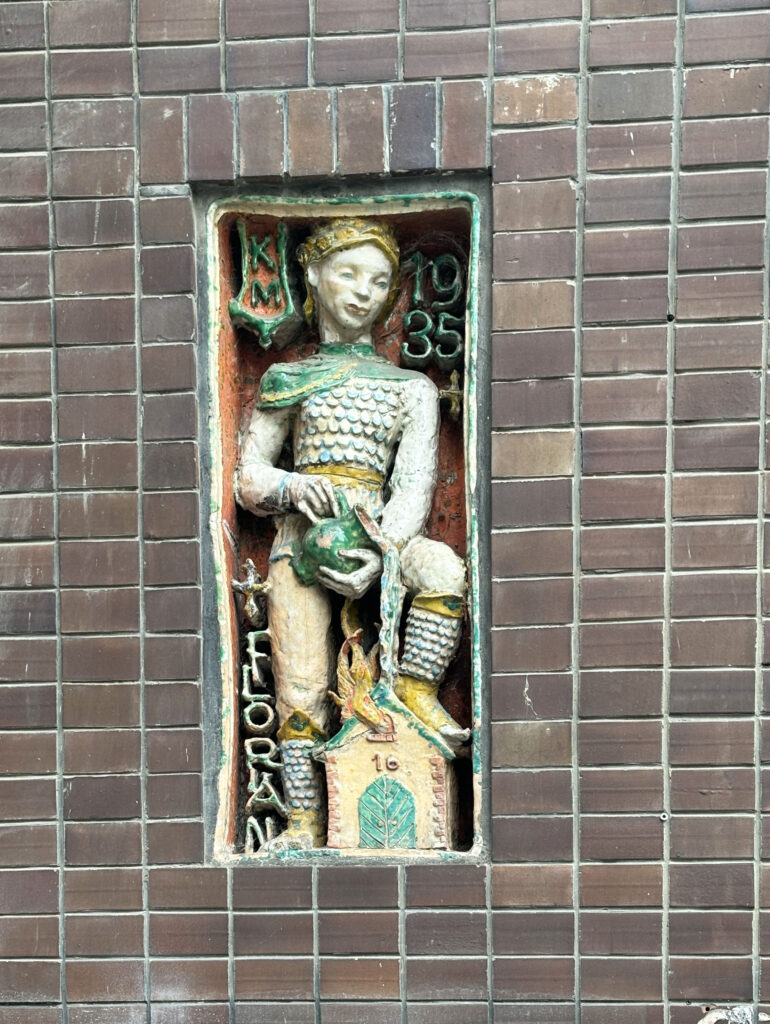
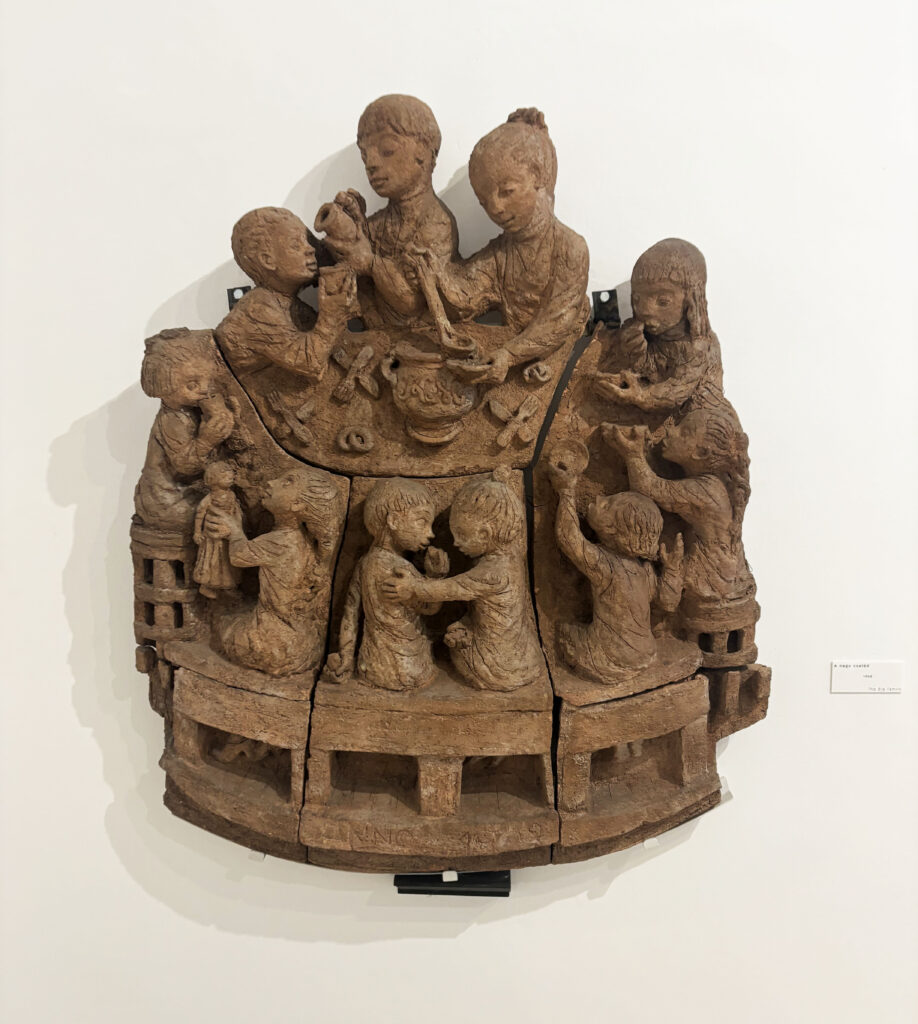
A short train ride north of Budapest is Szentendre, a lovely town that has been a magnet for artists across generations. You could easily spend all day wandering its pastel-hued streets, exploring its many museums (and admittedly dodging the tourist traps!), but today we focus on Margit Kovács, one of Hungary’s most famous (and yet somewhat overlooked) ceramicists. This dedicated and prolific artist, a master of her craft, fills room after room with architectural ornaments, wall-tile paintings, terracotta sculptures, and figures of women, children, families, biblical stories, allegories, narratives, and decorative and functional pottery. There’s even a hands-on section where you can touch replicas of her work, feeling her understanding of dimensionality, sgraffito, engobe, and layered glazes.
A commercial success in her time (before and after WWII, despite being Jewish), Kovács is now rarely mentioned in contemporary fine art circles. This raises questions about popularity and prestige. What exactly makes her work seem passé? Is it too feminine or sweet? Is everyday life as content not enough? Was it considered borderline kitsch, and if so, was it because she mass-produced replicas of figurines in her oeuvre? Was her acceptance by the Communist Party seen as a betrayal? What determines whether an artist is regarded as a serious intellectual or not?
In her work I see one who followed her vision, with great skill and enthusiasm, and it resonates with me. Kovács wrote: "When it comes to works I really like, I am filled with a humming joy. . . This must be how a sparrow or blackbird is delighted when it flits to ever higher branches in the sunshine after rain. It is such joy . . . such rapture, to be picked up by the rush and to be made happy by my work, which I hope also makes others happy. But I know, because I have a sense of decency, that sparrows and blackbirds are not alone in nature - there are also eagles. I do not wish to speak in the language of eagles; I only wish to be blessed forever with the capacity for the above-mentioned humming, so that I can sing in my own voice.”
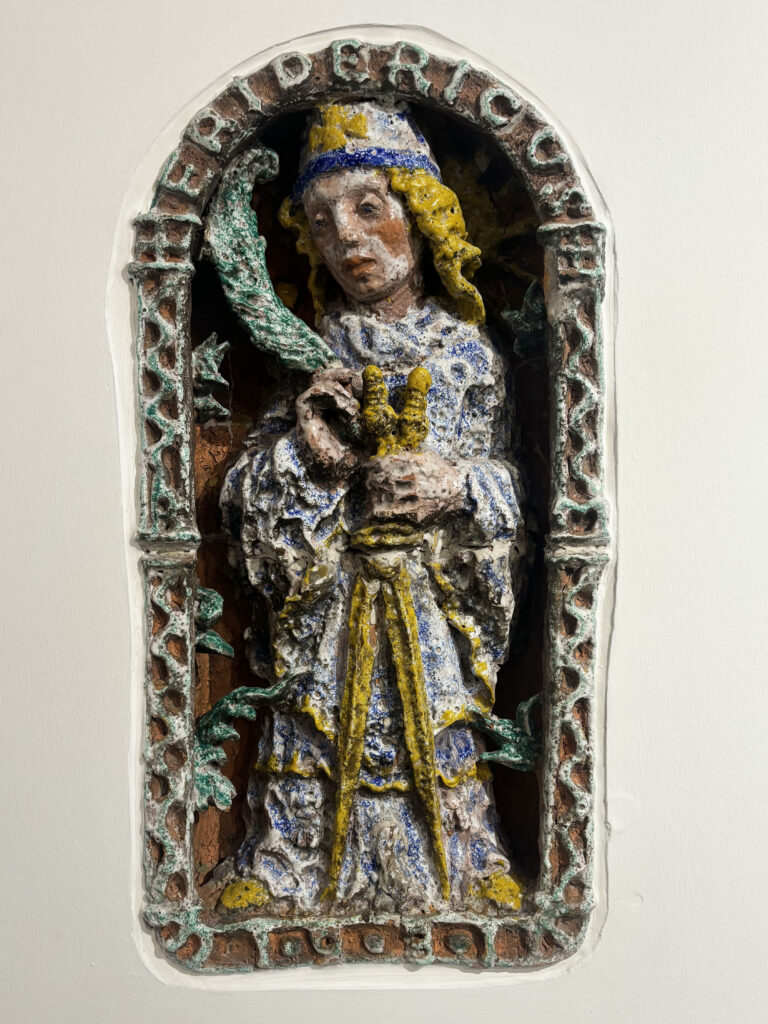
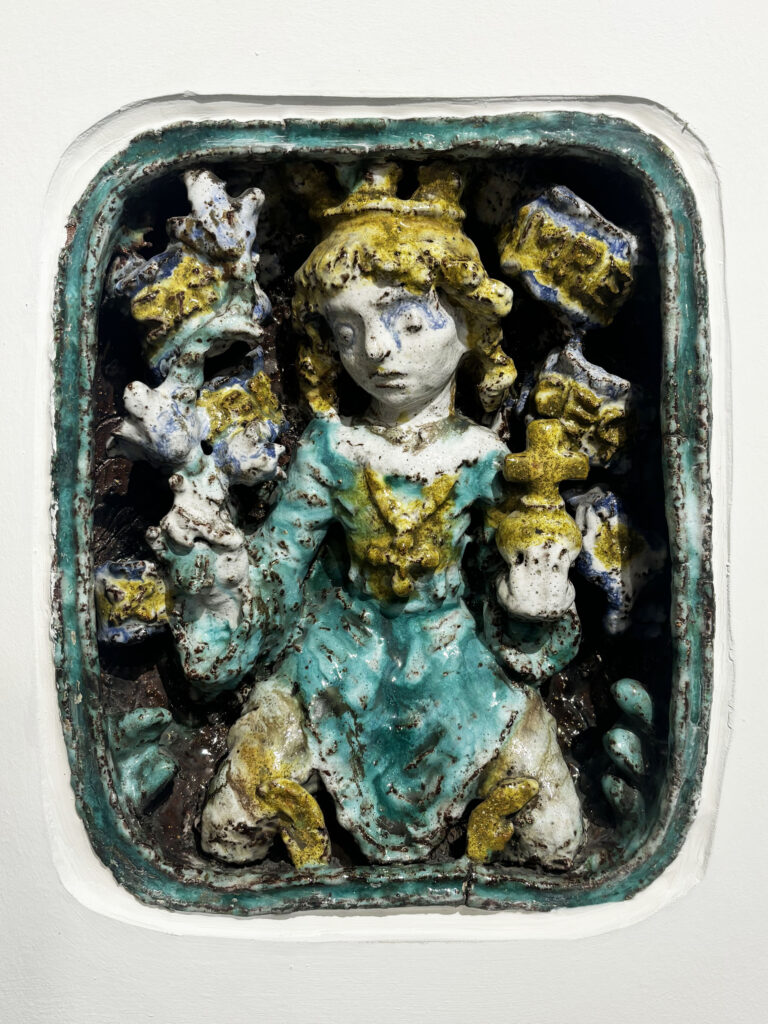
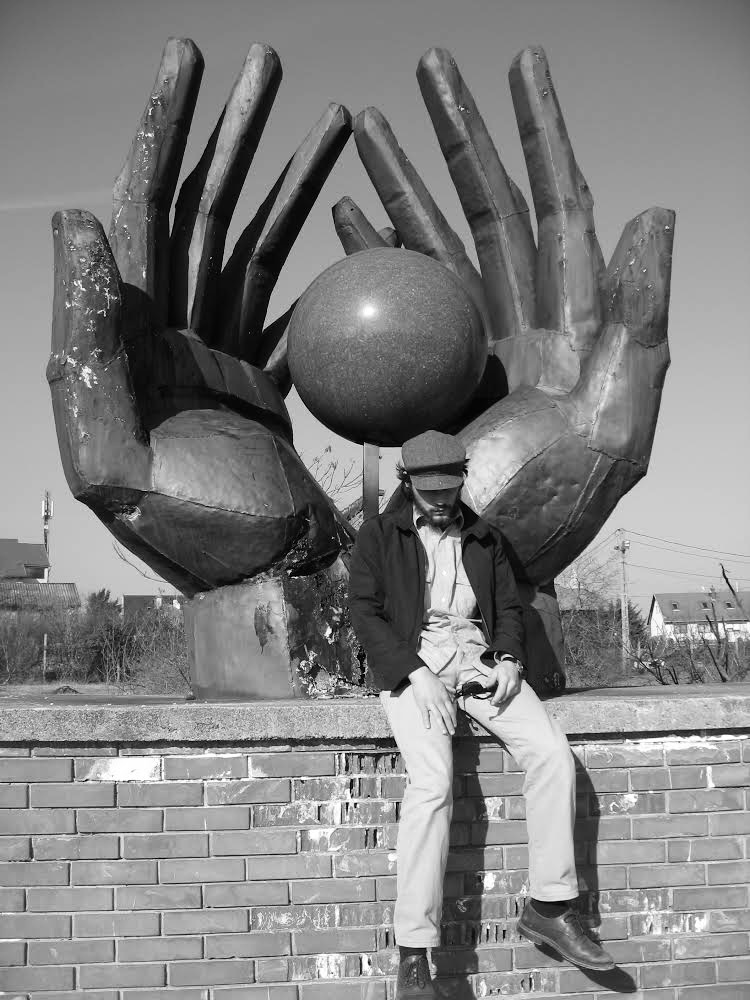
Alternative Option: Memento Park
Designed by architect Ákos Eleőd, Memento Park houses the discarded monumental sculptures and plaques once used as propaganda by the Communist Party during their reign in Hungary from 1949 to 1989. This eerie, contemplative, and sometimes overwhelming open-air museum, awe-inspiring in scale and craftsmanship, adds an experienced voice to the contemporary discussion of public values and public art.
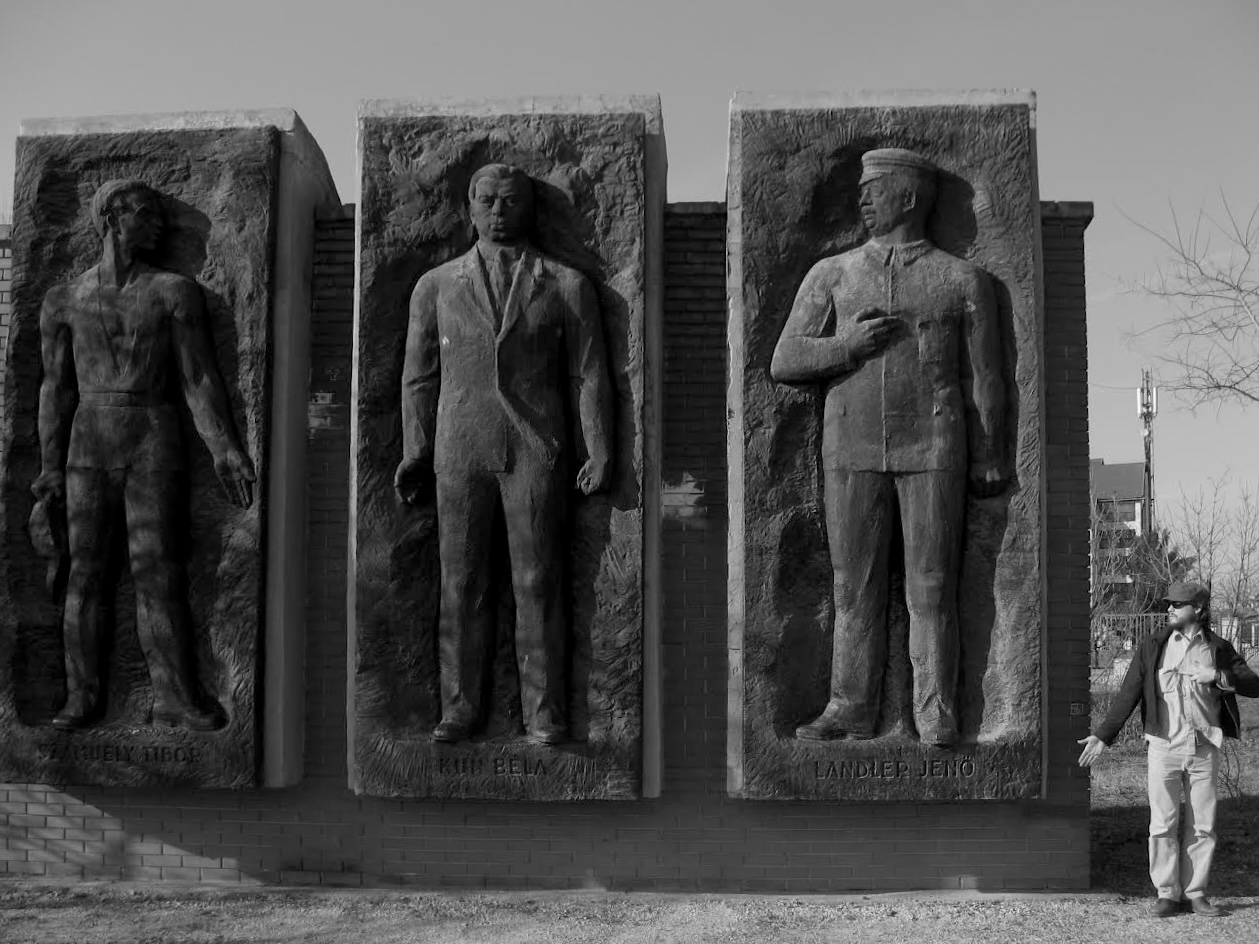
Tour the Magyar Bányászati és Földtani Szolgálat / Mining and Geological Survey of Hungary
One of Ödön Lechner’s instantly recognizable Secession wonders, this building remains a testament to his unique style. Though the museum itself is closed, you can still reserve a guided tour of its interior on Wednesdays, and if you’re lucky, climb to the top. It’s a rare opportunity to view the Zsolnay tiles up close (the running joke is that Lechner’s roofs were made to be appreciated by pigeons). Ceramic elements include the Zsolnay roof tiles and inlays featuring not only folk motifs but also fossil motifs, with blue representing water and hallway mosaics referencing caves. Note the globe resting on the shoulders of four Atlas figures on the roof: originally intended to be four dwarves to honor the miners of fairytales, they were deemed too fanciful and replaced with the Titan instead.
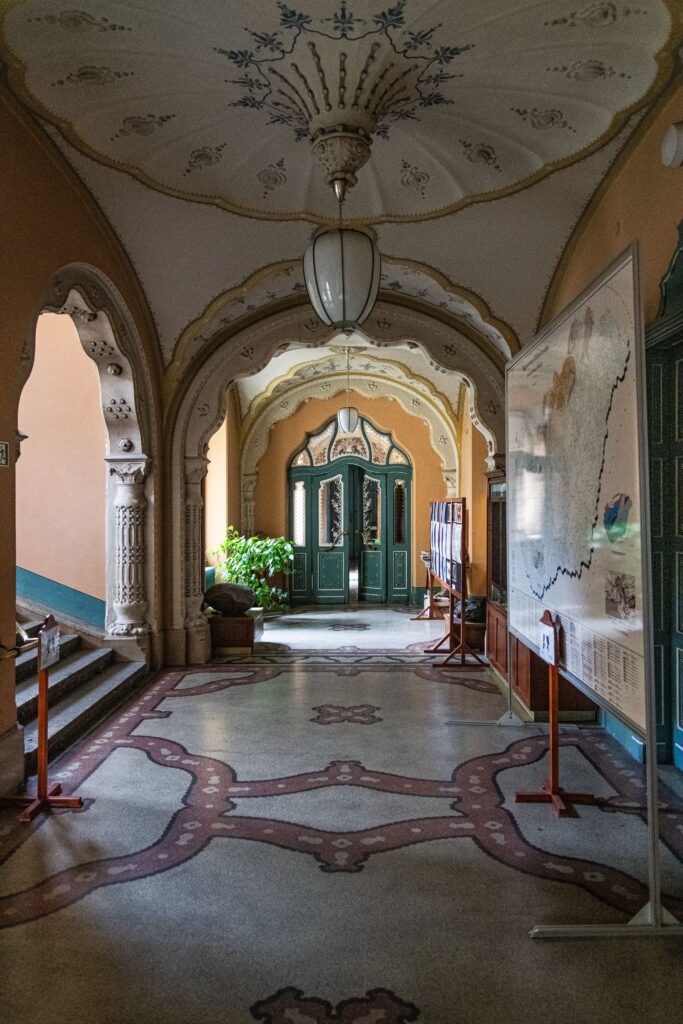
11 AM: NALAM
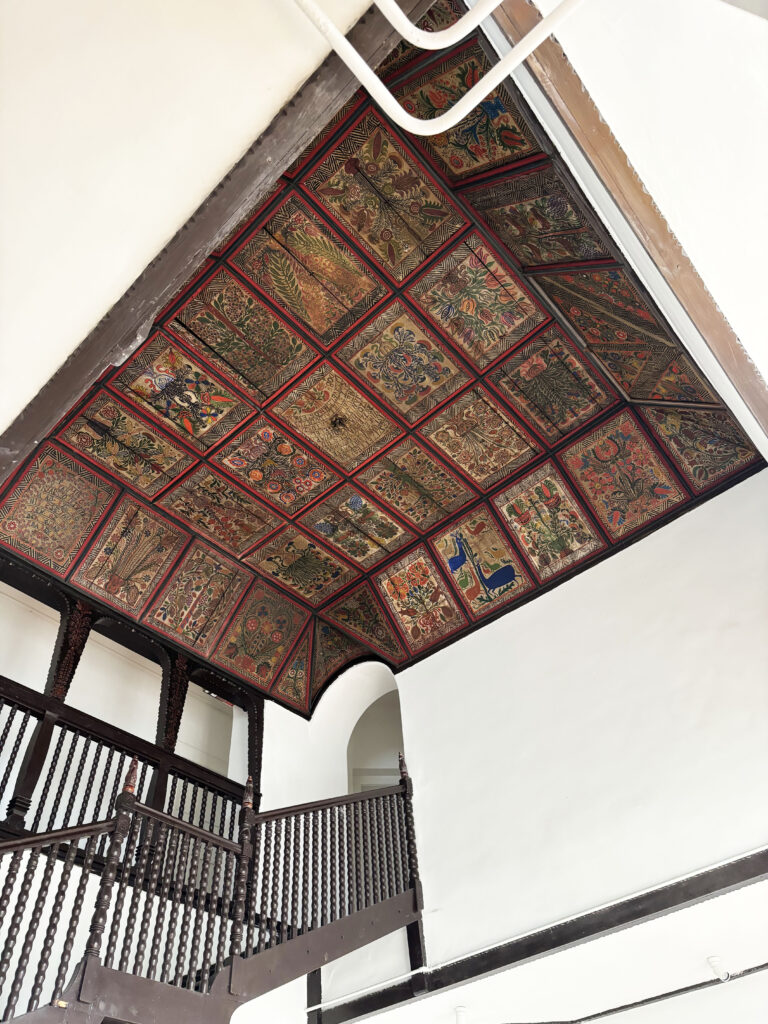
Make an appointment for NÁLAM, Budapest’s “first shoppable home,” where founders Tamás and Shalay gather work from local and international artists and designers to fill a gorgeous, light-drenched apartment. The gallery model is ingenious: not only do you get a preview of how the art can be lived with, but you also experience the slightly voyeuristic delight of an estate sale. After being buzzed through the gate, you pass through the communal garden of the complex, enter the foyer, take the elevator up, and arrive at NÁLAM’s inconspicuous door. Stepping through this portal offers you the opportunity to witness a slice of Hungarian home life that bridges history with contemporary design—like entering a geode.
NÁLAM features artwork in partnership with Contai, a young Hungarian-based gallery with an innovative art-market model. Contai’s curations have a permanent home online and a transitory existence in real life. Selected works are shown in brick-and-mortar spaces like NÁLAM, with plans for temporary pop-ups and migrating exhibitions. However, the acquisition experience is predominantly digital, making it accessible to all. Founder Julia is passionate about her community of represented artists and has ambitious plans to redefine not only the traditional gallery experience but also how we connect with the art we live with in our homes. This is Contai’s first year in existence, so keep an eye on its trajectory!
Simon Holpert
Simon Holpert is a contemporary French-Hungarian ceramicist represented by both galleries. His abstract and organic pieces, caressed into existence, have a gravitational pull on the hand, heart, and mind: they invite touch, inspire curiosity, and encourage contemplation. View his work radiating from Contai’s website, or experience its inviting presence at NÁLAM.
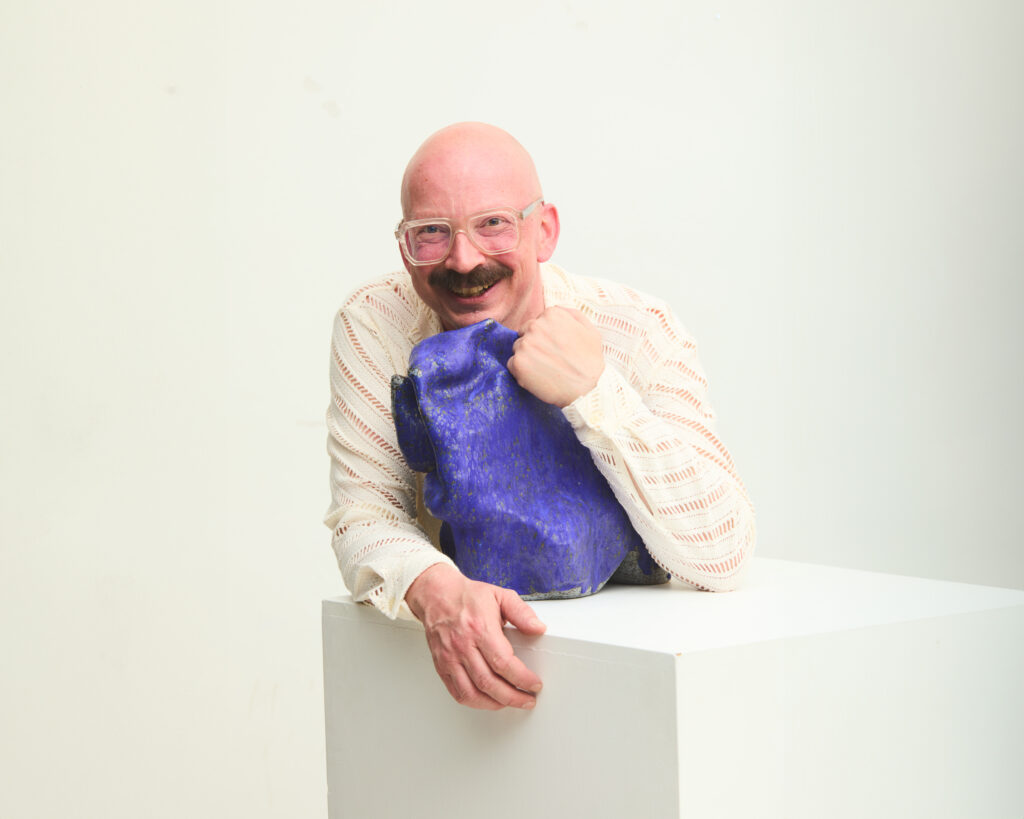
12:30 PM: Lunch
Nearby NÁLAM, there are two ambrosial options. Pingrumba’s vibrant interior is a joy, and the food is delectable, spanning cuisine from the Mediterranean to India. If the weather is pleasant, dine on the back patio, which might make you question whether you’re still in Budapest or have somehow been transported to a warmer clime.
For lighter fare, try Norma Grand, a speciality Nordic-style craft bakery and natural wine bar.
For a traditional lunchtime experience, try an étkezde, a neighborhood eatery featuring quintessential Hungarian foods at affordable prices, with decor (and regular patrons!) that likely haven’t changed for decades. Lovely, delicious, and local.
If your stomach can hold out a little longer, make your way to Öcsi Étkezde or Kívánság Étkezde in Pest, both of which are en route to our next stop. No matter which restaurant you choose, definitely order a cucumber salad to refresh and balance your meal.
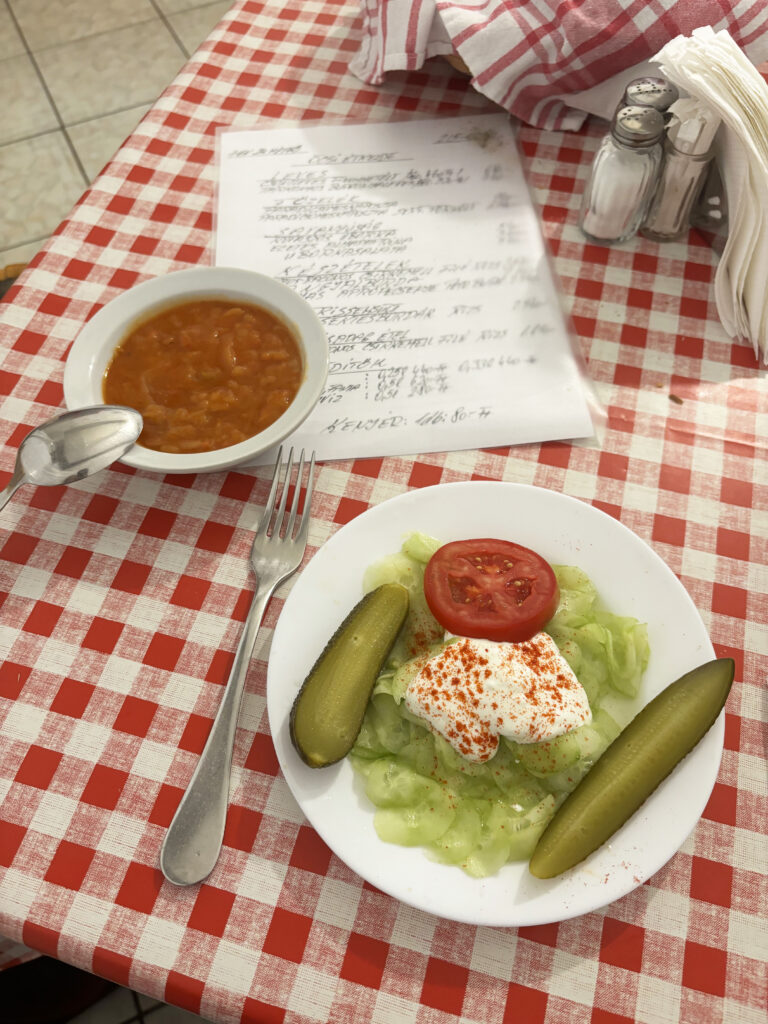
2 PM: Gallery Visit with Tünde Ruzicska
Travel to the Werkeletelep, a suburban garden oasis of Kispest, to visit the studio of ceramicist Tünde Ruzicska. Trained at Hungary’s premier Moholy-Nagy University of Art and Design (MOME), Tünde is Budapest’s most coveted artist-designer of custom dinnerware for fine-dining restaurants across the city. Her pieces meld cultures, classical and personal: the forms and glazes are ancient yet reflective of her modern touch. Beyond her talent, work ethic, and artistic vision, Tünde is also a lovely, thoughtful, radiant being, a generous teacher, and in addition to her functional ceramics, a sculptor and installation artist. A visit to her studio is an education and a delight.
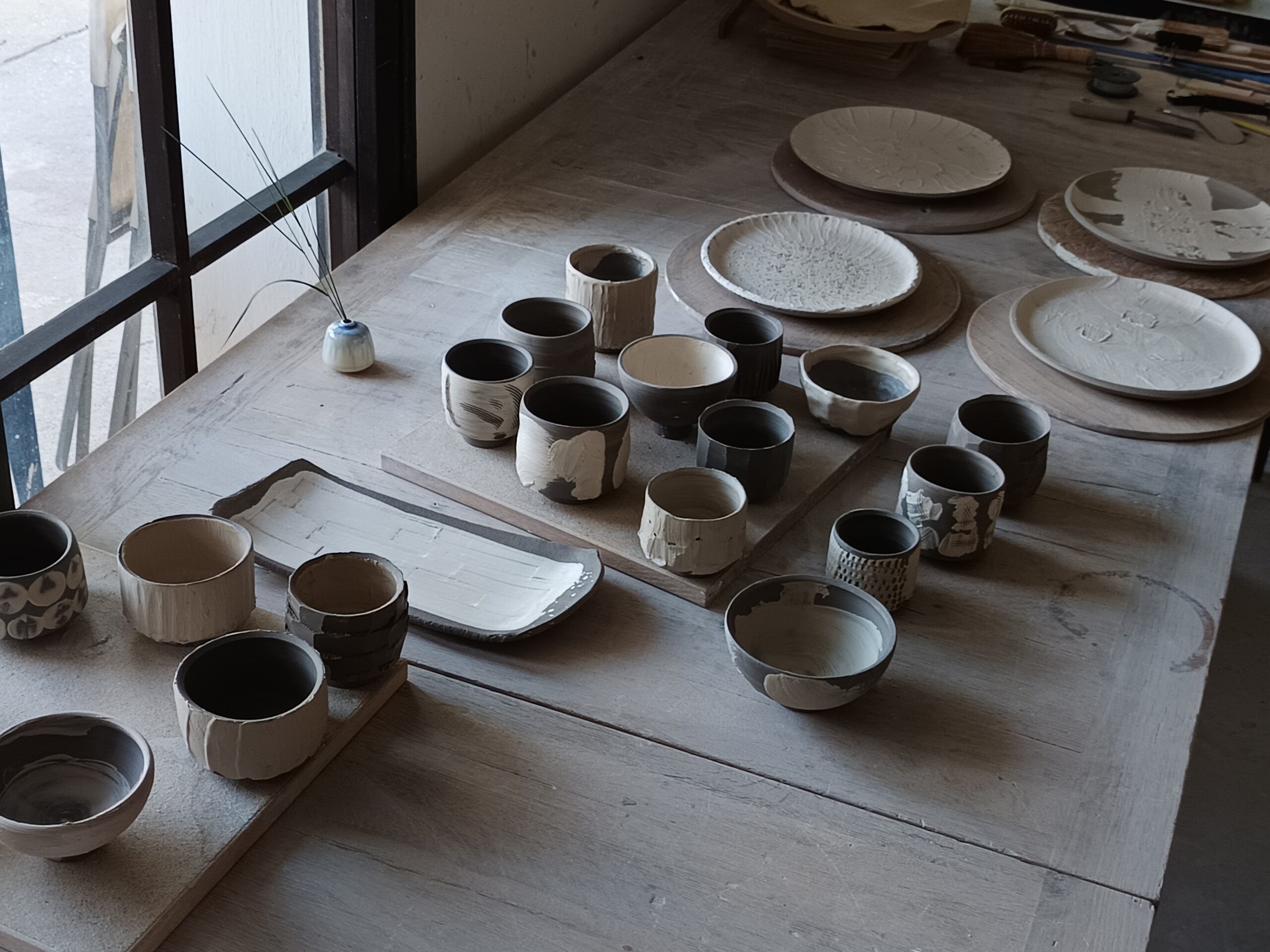
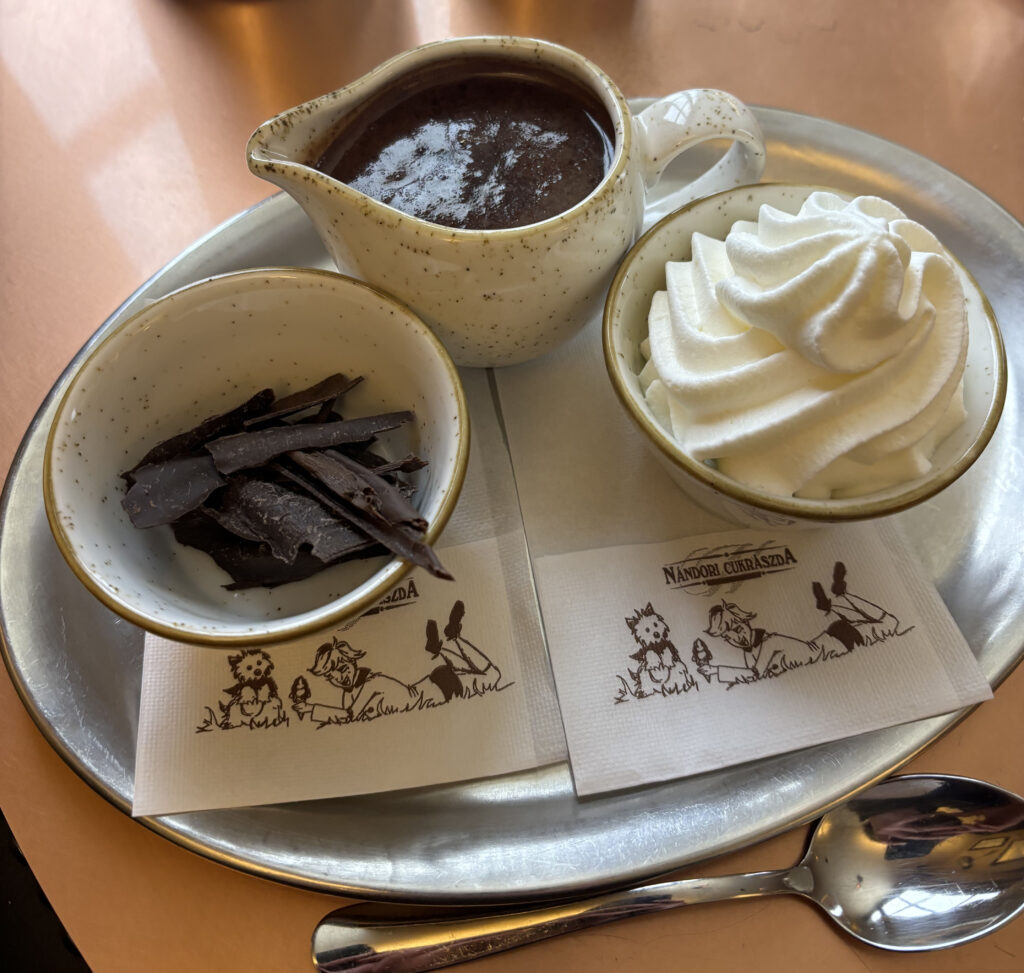
3:30 PM: Pick-me-up at Nándori Cukrászda
This neighborhood pastry shop serves sweets and drinks in a quaint, mirrored, and gilded interior. For something different, try the pistachio raspberry mousse cake, or indulge in what is guaranteed to be the best hot chocolate you’ll ever have.
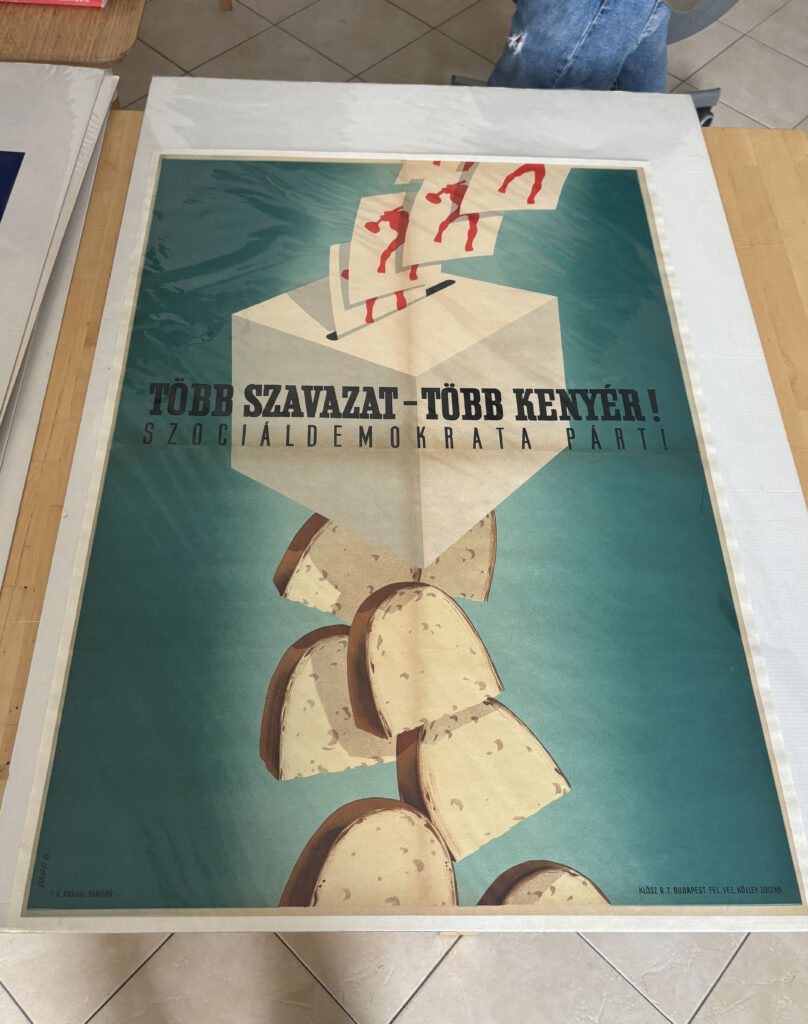
4:30: Budapest Poster Gallery
Founded by Ádám Várkonyi in 2010, Budapest Poster Gallery is the only gallery worldwide specializing in fine Hungarian vintage posters and commercial graphic design from 1890 to 1990. As the great photographer Robert Capa once said about his peers, “It’s not enough to have talent; you also have to be Hungarian.” The same holds true for poster design: in vintage Hungarian hands, it is unparalleled. It’s worth a visit (by appointment only) to marvel at these works in real life. Beyond its analog collection, the gallery’s exceedingly thorough website offers a wealth of digital information on each artwork and artist. (In fact, when researching the poster collection within the National Széchényi Library, Budapest Poster Gallery kept coming up as a key informant.)
Bonus: With his business partner Zoltán Földvári, Ádám recently founded the November Gallery, dedicated to artwork (predominantly painting) by Hungarian greats, particularly those who’ve been unduly overlooked—20th-century women artists, Naïve art, and Hungarian Art Nouveau. As with poster acquisitions, Ádám and Zoltán have an exquisite eye. This gallery is also by appointment only.
Alternate: Bélyegmúzeum / Postage Stamp Museum:
If you can’t make your poster appointment, which highlights the brilliance of Hungarian (and international) postage, don’t worry—you don’t need to be a collector to appreciate the miniature graphic designs on display. As you enter, from a ceramic standpoint, take a moment to admire the glassy rutile wall tiles, which are perforated at the edges to imitate stamps. For the kid in you, the displays are interactive: all stamps are enclosed in vertical glass drawers that you must slide in and out to discover their contents. The corresponding literature is both engaging and informative, and you’ll leave with a philosophical aftertaste of philately: it’s not perfection, but a flaw in production that heightens the value of a stamp.
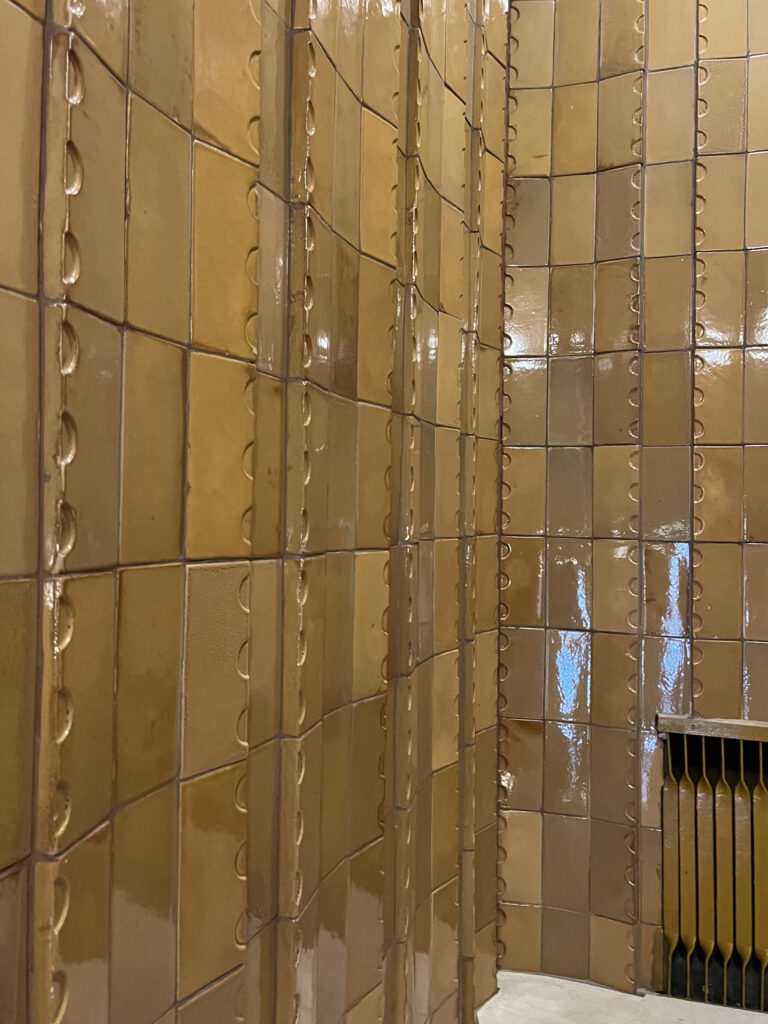
5 PM: Epreskert

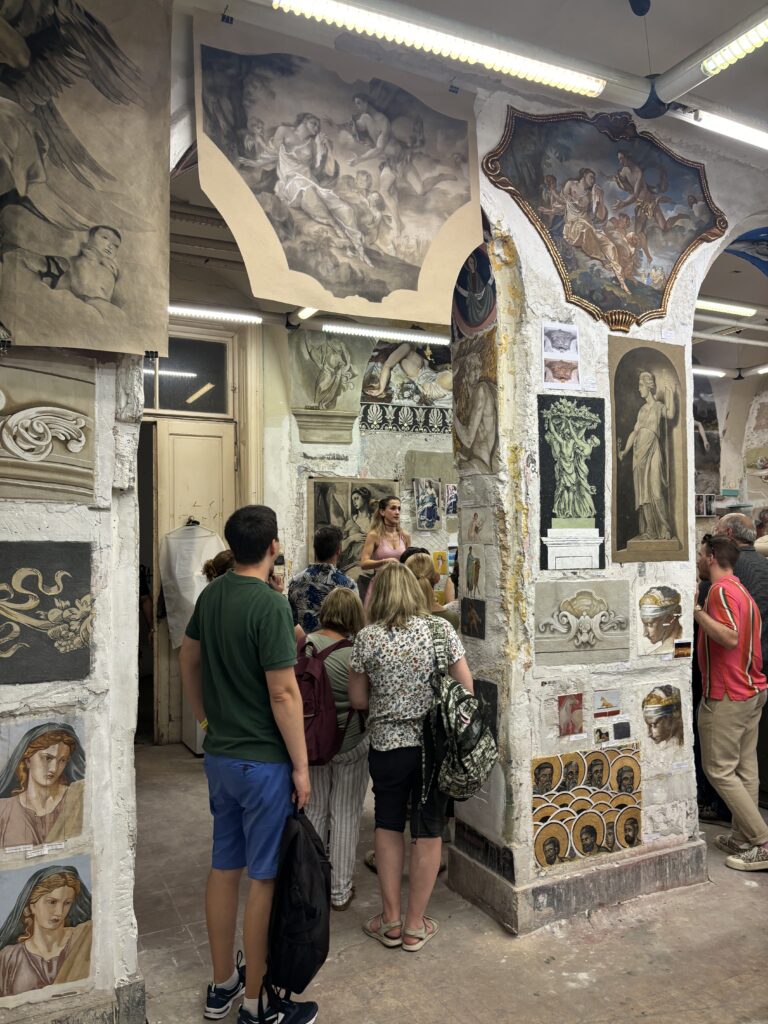
As you travel toward your next stop, the Museum of Ethnography, take a moment to walk past Epreskert, once an artist colony and now the ateliers of the Hungarian University of Fine Arts. More than likely, this historic Belle Époque compound will be locked to visitors (though on occasion, a kindly guard might let you in). However, through the gate, you can still catch a glimpse of the otherworldly garden filled with an extensive array of sculptures. The University trains not only artists but also restoration experts, so the work varies in stages of display, construction, disrepair, and repair, ranging from figurative to abstract across various mediums. It encapsulates the feeling in Budapest: that the past is always near at hand.
If you find yourself here in late June, Budapest hosts a city-wide cultural event known as the Night of Museums. Most museums stay open late (as in, past midnight late!) and offer special programming. It is on this evening that Epreskert is famously open to the public. Highly recommended.
6 PM: Néprajzi Múzeum / Museum of Ethnography
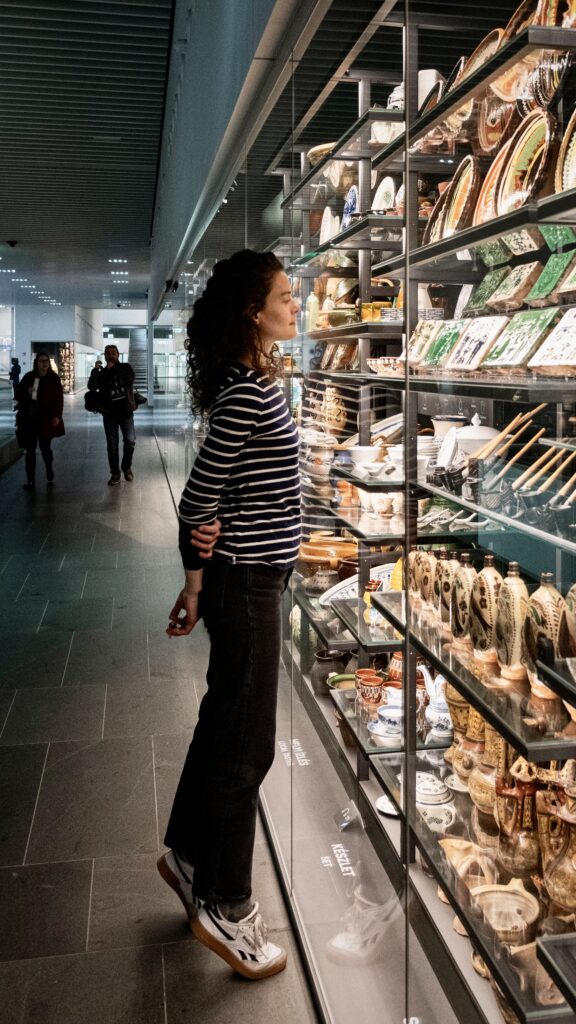
Continue your walk up to Városliget, Budapest’s City Park, where the Museum of Ethnography has freshly moved. Custom-designed by Marcel Ferencz to meet diverse needs for research, archiving, and display, this new building is an ultra-modern, internationally renowned architectural triumph. To recharge either before or after exploring the museum’s collections, I highly recommend basking in the gardens atop its swooping roof.
Ceramics Space - Ceramics of the World is the museum’s free-of-charge permanent exhibition, showcasing 4,000 international ceramic objects curated from their archives of over 35,000 pieces. The arrangement into two wings reflects the two hemispheres of the human brain, and though divided by a corridor, the exhibition leaves one with an overall sense of the unity of the human experience through the medium of clay, despite the diversity of forms and eras.
A thorough brochure and/or audioguide provides insightful context, and though available in multiple languages, it is written in typical Hungarian style: simultaneously intellectual and poetic. This collection is a must-see, if not a multiple-see, as each visit will reveal a new favorite ceramic.
Bonus: For as much as is on display, the Museum of Ethnography also has an extensive archive in their collections storeroom, staffed by a team of brilliant, gracious, helpful experts in their respective fields. If interested in in-depth study, you can apply for a research permit.
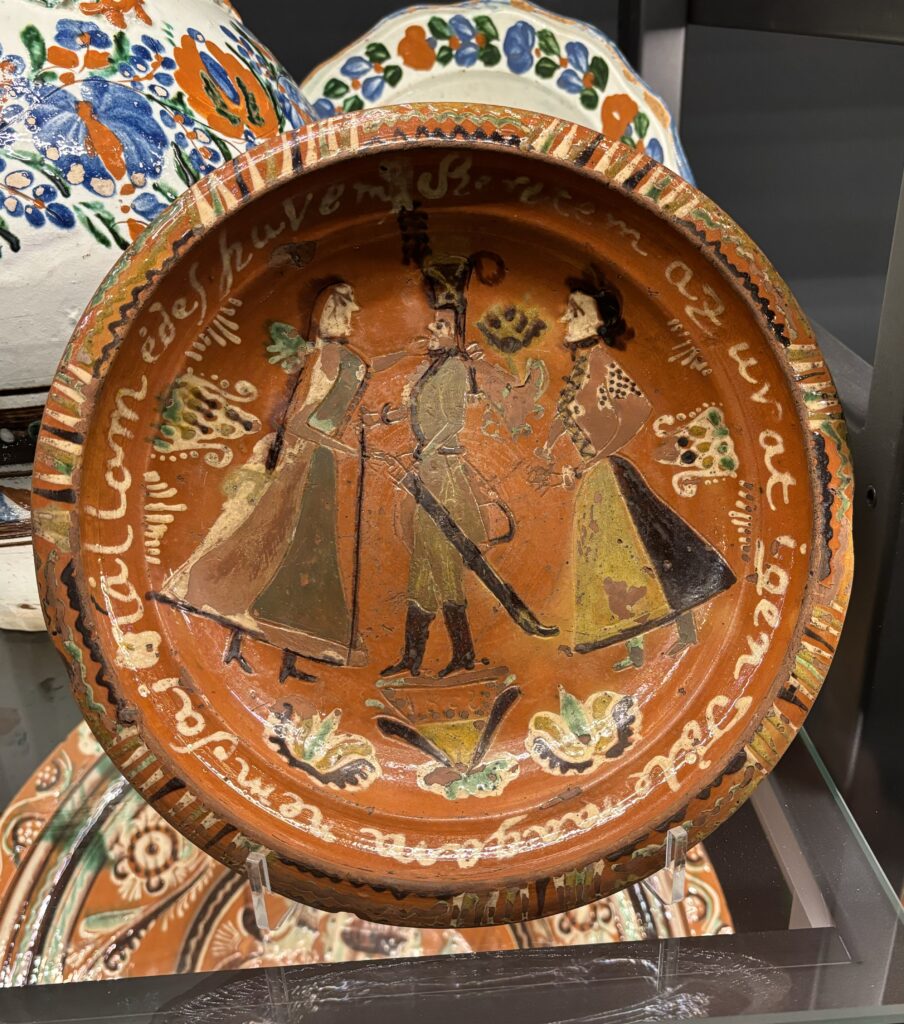
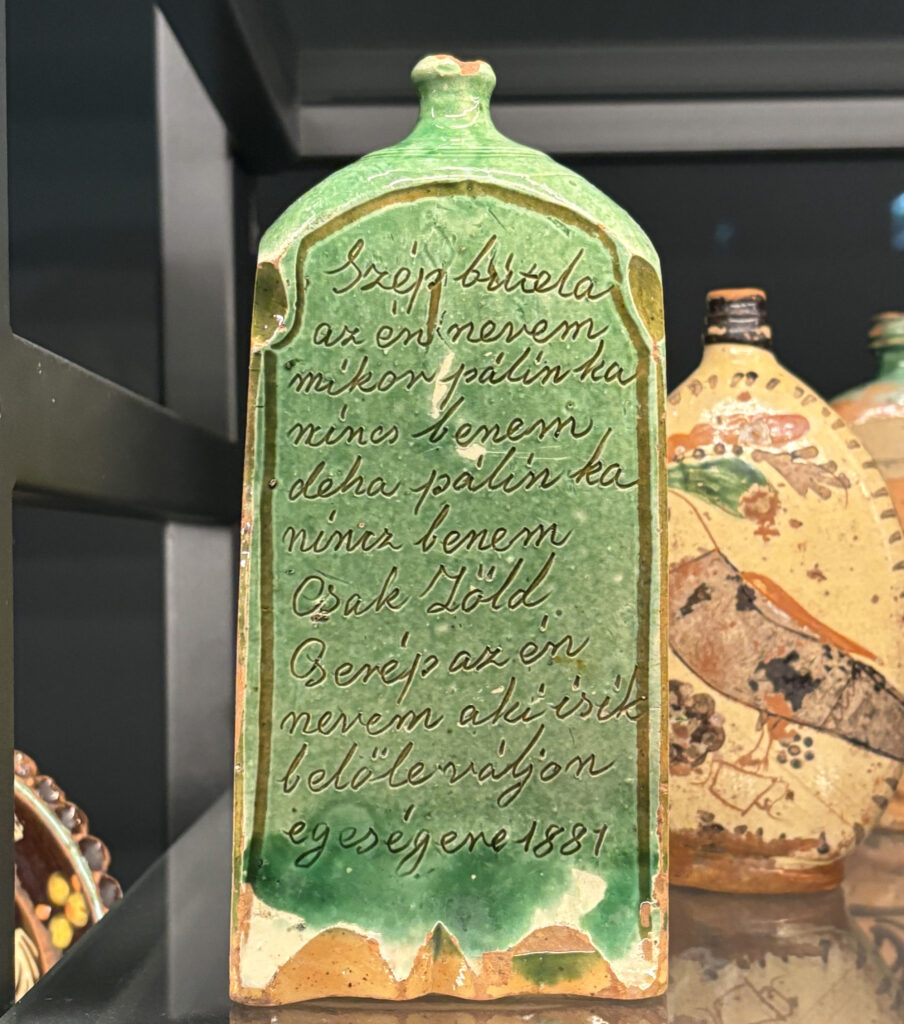
7:30pm: Dinner
Three options for this evening:
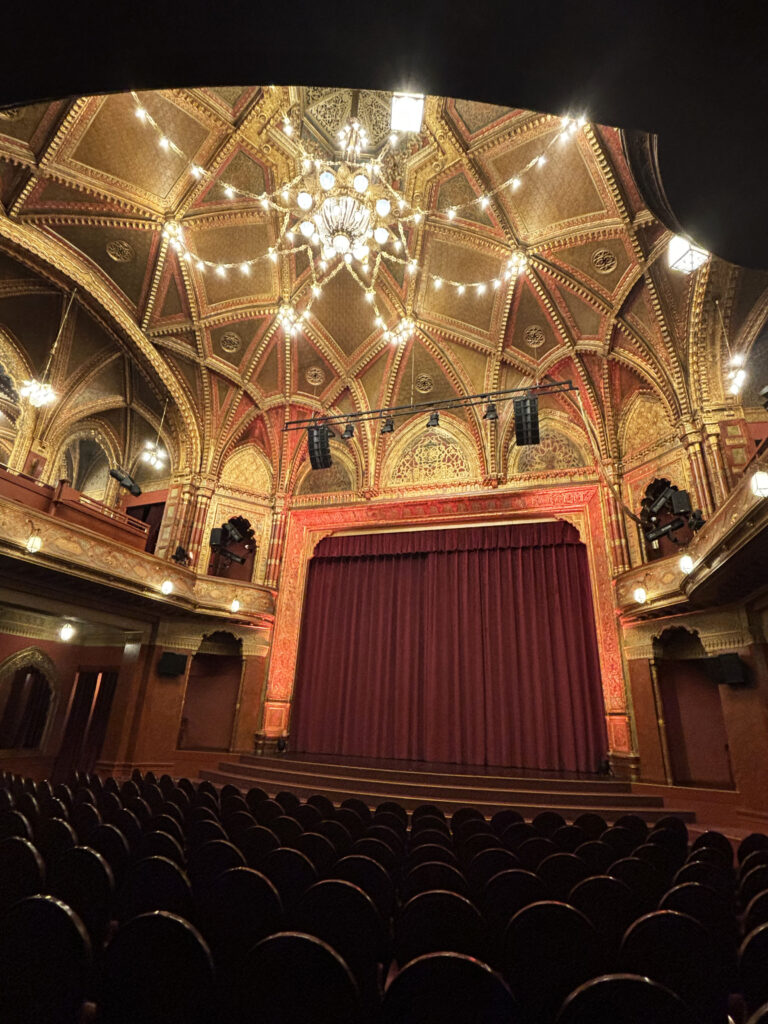
9 PM: Enjoy the Park at Night or Watch a Film
Margitsziget (Margaret Island) is Budapest’s other city park, an island in the middle of the Danube, north of downtown, where you can relax in your preferred way. It offers a peaceful, quiet, and safe, tree-sheltered walk in the evening, and from the entrance at the base of the island, you’ll have a spectacular view of Budapest at night, with the Parliament building to your left, the Chain Bridge in front, and the Royal Palace to your right. One delightful experience is the Musical Fountain: during the summer, it rockets water 30 feet into the air, illuminated by a light show synchronized to classical and pop music favorites. It’s a delightful spectacle for all ages.
Alternatively, you can watch a film at the Uránia Nemzeti Filmszínház / Uránia National Film Theater, an elaborate Art Nouveau and Moor-ish inspired orpheum now dedicated to classic and contemporary cinema. Their website indicates spoken and subtitled languages.
8 AM: Morning Stroll through Fiumei Road Cemetery (aka Kerepesi Cemetery)
It may seem macabre, but Budapest’s cemeteries are among the finest sculpture parks in the city. They feature everything from wooden totems carved in the Transylvanian style to cement, stone, or steel sculptures—figures both weeping and triumphant. You’ll find themed honors for Olympic medalists, Nobel prize winners, and artists, as well as abandoned graves revealed only by mounds of ivy. If you are fortunate enough to be here on November 1–2 (All Saints’ Day or All Souls’ Day), you must visit the cemeteries in the evening, when they are streaming with people honoring their deceased loved ones with candles and flowers. To put it mildly, it is a preview of heaven.
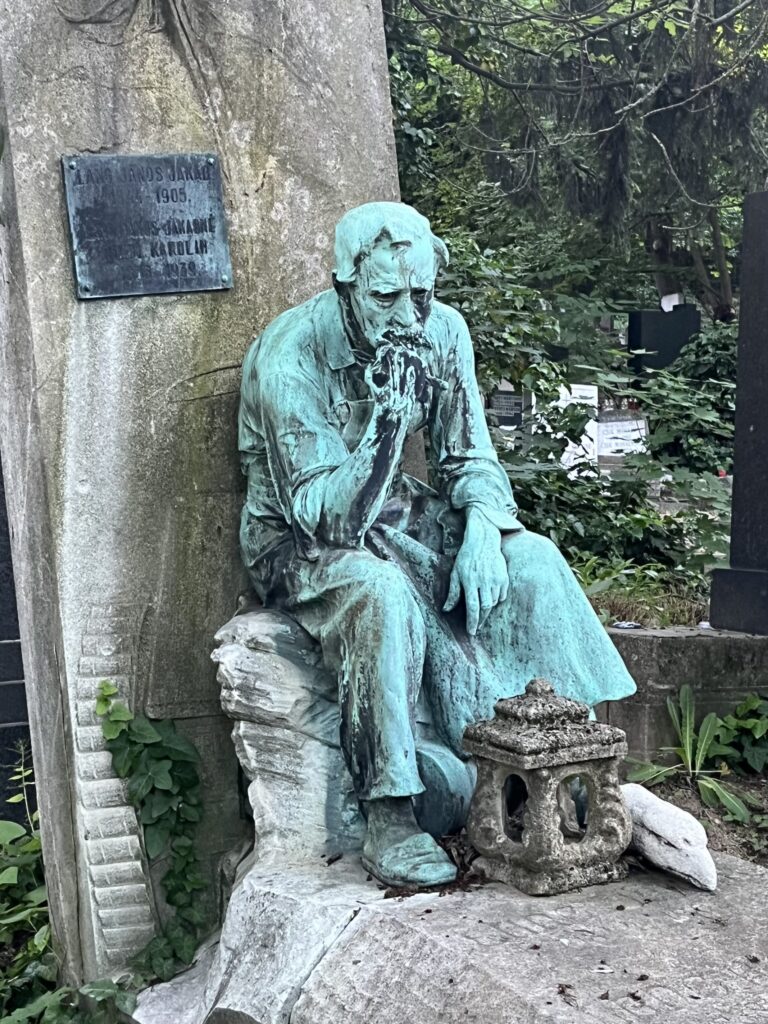

Additionally: The frieze of the National Social Security Institute, across from Fiumei, features extraordinary and extensive relief murals on its walls, depicting occupational health and
safety hazards as if someone had sculpted the contents of an OSHA handbook. At first, one may appreciate the Social Realist dedication to blue-collar labor, but gradually, a sense of memento
mori and anguish creeps in. It elicits a visceral reaction.
Alternative Option: Kozma Street Cemetery
The Cemetery is further out but well worth the visit for its crown jewel, the Schmidl Mausoleum. This Hungarian Secession / Art Nouveau mosaic masterpiece features ceramic elements made from Zsolnay tiles and was designed by the famed architect Béla Lajta, possibly in collaboration with Ödön Lechner.
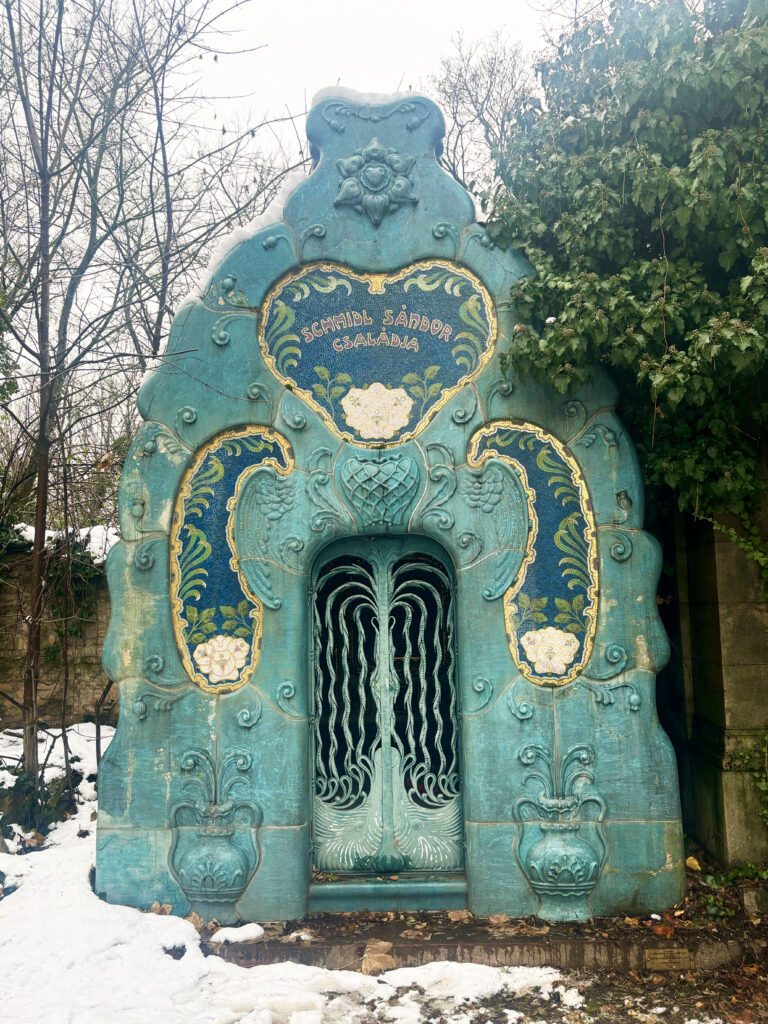
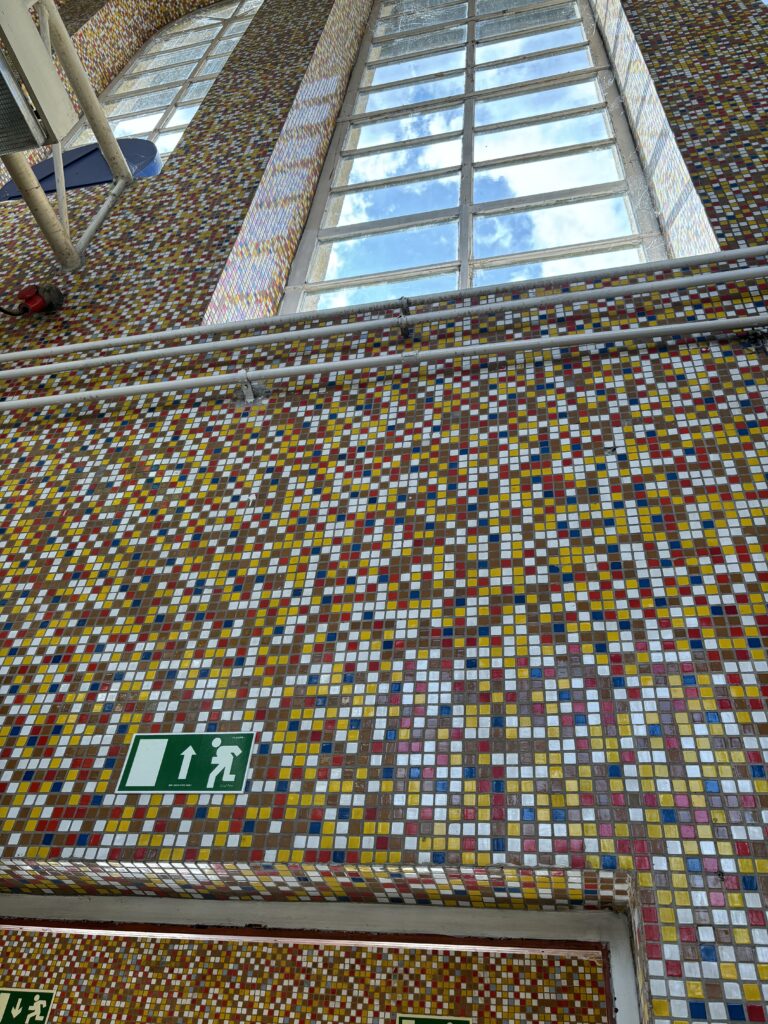
9:30 AM: Travel to Kecskemét for the International Ceramics Studio (ICS):
From Nyugati Pályaudvar (Western Train Station), purchase your ticket from an automated kiosk and catch a train that will transport you through the lovely Hungarian countryside—depending on the season, you’ll pass through fields of clover, poppies, sunflowers, or snow—on your way to the picturesque city of Kecskemét, home to Central Europe’s premier ceramic art studio. Once you reach the Kecskemét train station, with its eye-popping mosaic interior reminiscent of being inside a gumball machine, ICS is easily reached by a short cab ride or a 20-minute walk “following the yellow brick road” (the color of the streets’ pyrogranite ceramic bricks, invented by Zsolnay for frost-resistant outdoor architectural use).
Founded in 1978 by János Probstner, on the initiative of Hungarian artists who felt culturally and ideologically isolated, ICS has grown into an international residency program for independent ceramic artists. It also hosts workshops, symposia, courses, seminars, and community events. On any given day, you might encounter a gallery opening, an atmospheric firing, elementary or university students streaming through the compound, a lecture, one ceramicist so focused on their work they don’t even look up when you peek into their studio, another ceramicist cat-napping in the sunshine—and perhaps a cauldron of paprikás krumpli cooking over an open fire in front of the wood kiln?
One of ICS’s unusual offerings is their oil raku kiln: similarly quickly and low-fired as standard raku, when the wares reach temperature, used industrial oil is placed into the kiln, smoking the wares to an iridescent black. The process is unique and lustrous, though the surface references the traditional Hungarian burnished black ware of Nádudvar, Szentes, and Mohács (itself reminiscent of indigenous black-on-black pottery of Southwest United States.) Fascinating to see the continuity of processes across time and space.
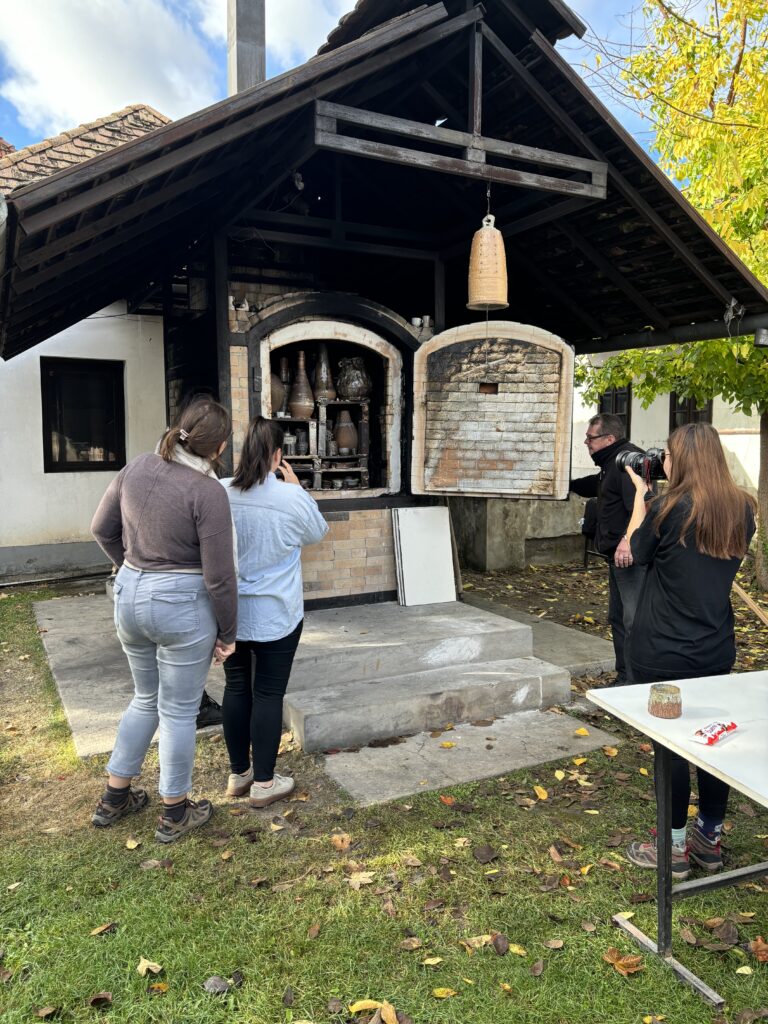
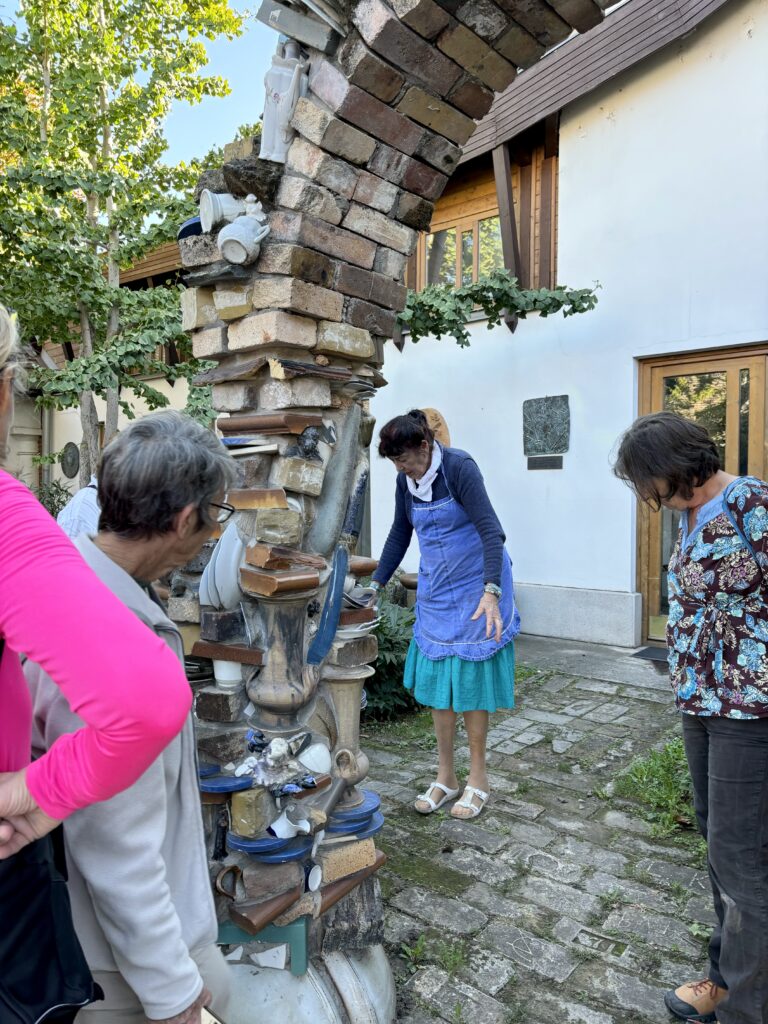
ICS is run by a fabulous team of highly acclaimed Hungarian ceramic artists, including Enikő Kontor, Kitti Antal. Be sure to ask to visit their on-site studios or marvel at their work in the ICS shop. Contact: Steve Mattinson: [email protected] and Kitti Antal: [email protected] to inquire in advance about visiting.
Stored in ancient cellars beneath the compound is the ICS Collection of Contemporary Ceramics—3,600 pieces of ceramic art from over 500 artists representing 45 countries. If you join a workshop or residency, you’ll have the chance to view this time capsule of ceramic history.
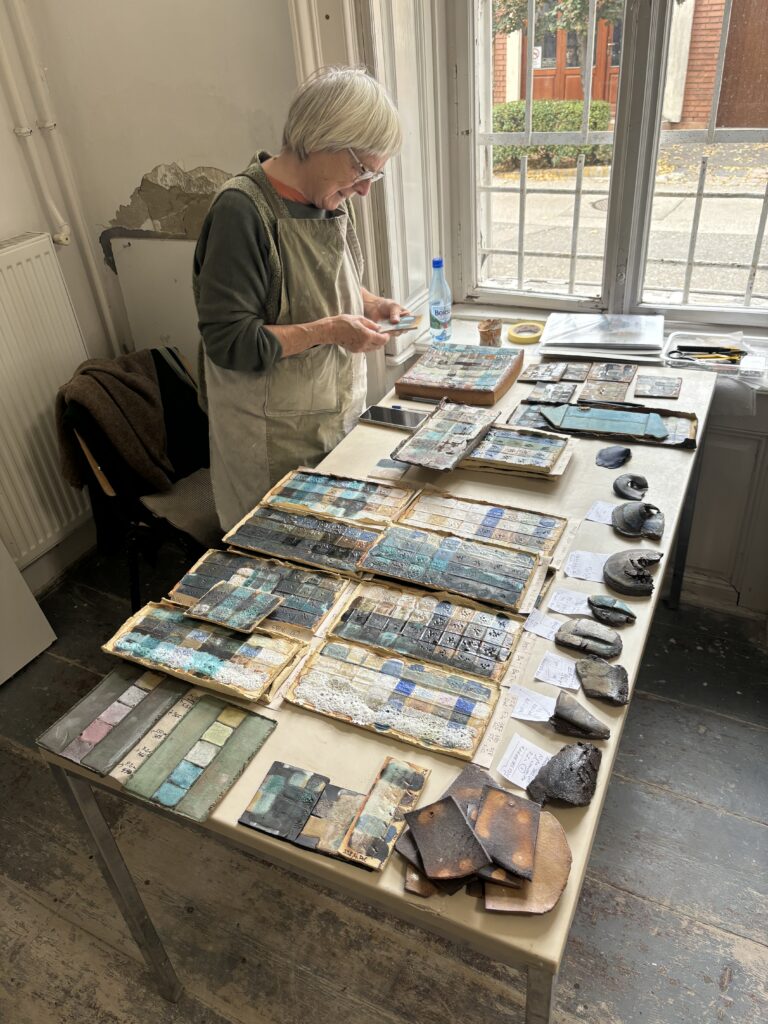
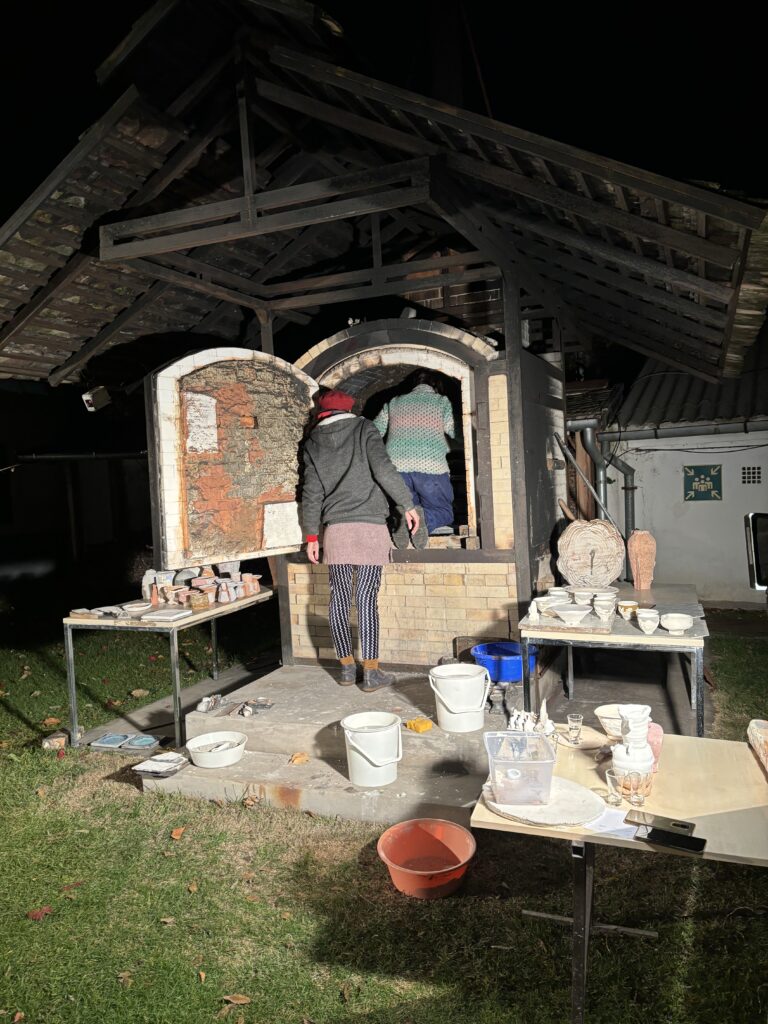
Open to the public, their affiliated exhibition space, Kápolna Galéria, hosts a new show every month, carefully curated to explore ceramics in all its functional, conceptual, folk art, and fine art iterations. ICS is a clay paradise. Contact: Steve Mattinson [email protected] and Kitti Antal [email protected] to inquire in advance about visiting.

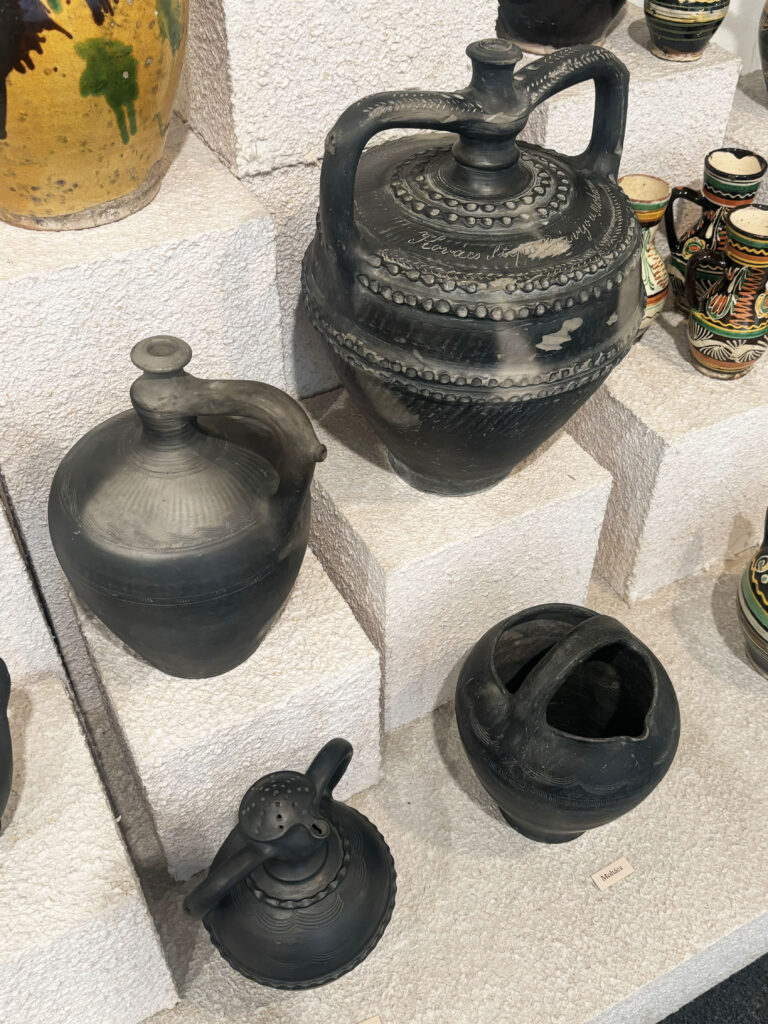
12:30 PM: Lunch at DharmaVega:
Between ICS and your next stop is a small but tasty Indian vegetarian restaurant. Like many restaurants in Hungary, they offer a deal on their prix fixe lunch menu.
1:30 PM: Naiv Művészeti Múzeum / Museum of Hungarian Naive Artists
The mostly figurative wood carvings, paintings, sculptures, and textiles that make up this museum’s intimate collection exhibit a level of steady-handed wisdom, sensitivity, curiosity, and a deep understanding of the human condition. It will both quiet and delight you.

2 PM: Cifrapalota / Ornamented Palace
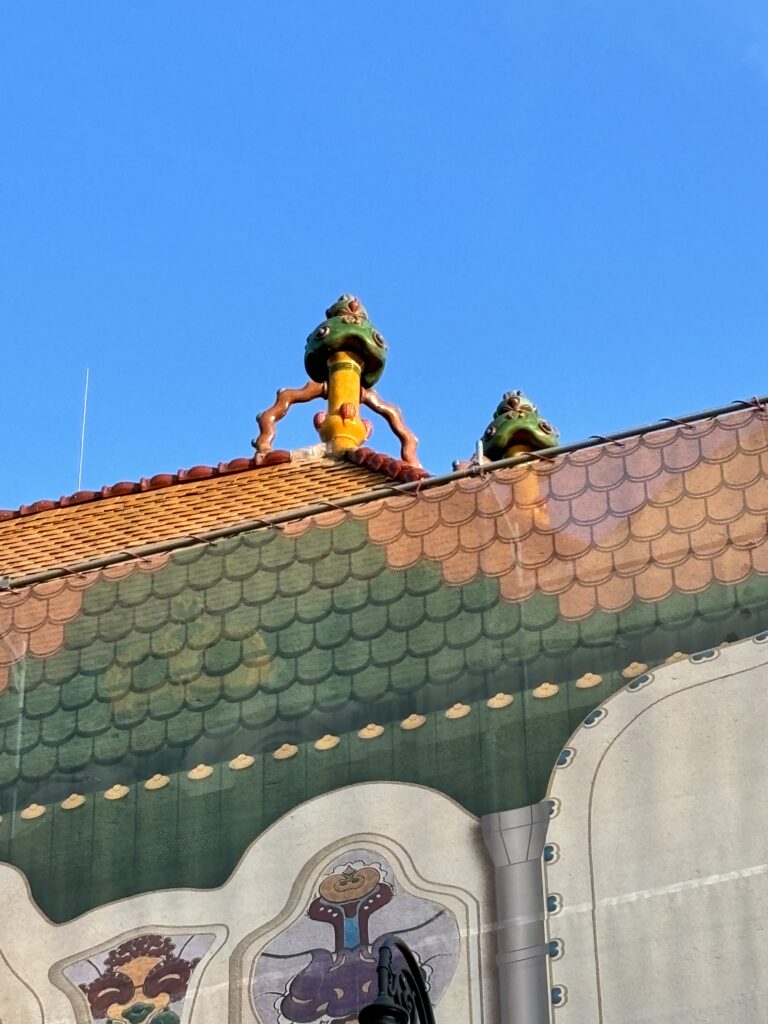
Kecskemét is a city rich in Hungarian Secession Art Nouveau architecture with the Cifrapalotaby Márkus Géza, as an exemplary piece. Its exterior is decorated with flowery, Magyar, and Turkic folk-inspired motifs and majolica tiles, some of which are outlandishly fantastical. Inside, the upper floor houses the fabulous and aptly named “Peacock Room.” This bounty of ceramic beauty was made possible by Zsolnay.
The museum itself contains masterpieces of Hungarian painting, accompanied by some of the most insightful and poetic signage you’ll encounter. In the artists’ biographies, one can feel the hand, heart, and mind of Hungary, and it feels fitting to be in Hungary, not in front of a Picasso, Rembrandt, or Monet, but reveling in the Hungarian vision. As Menyhért Toth wrote, "The other day I visited the exhibition of a young painter. And I thought if somebody came from abroad he could say that he could see the same at home as well. But where is it the taste of which is only here? It’s only Hungarian. That’s what I have wanted to grasp all my life."
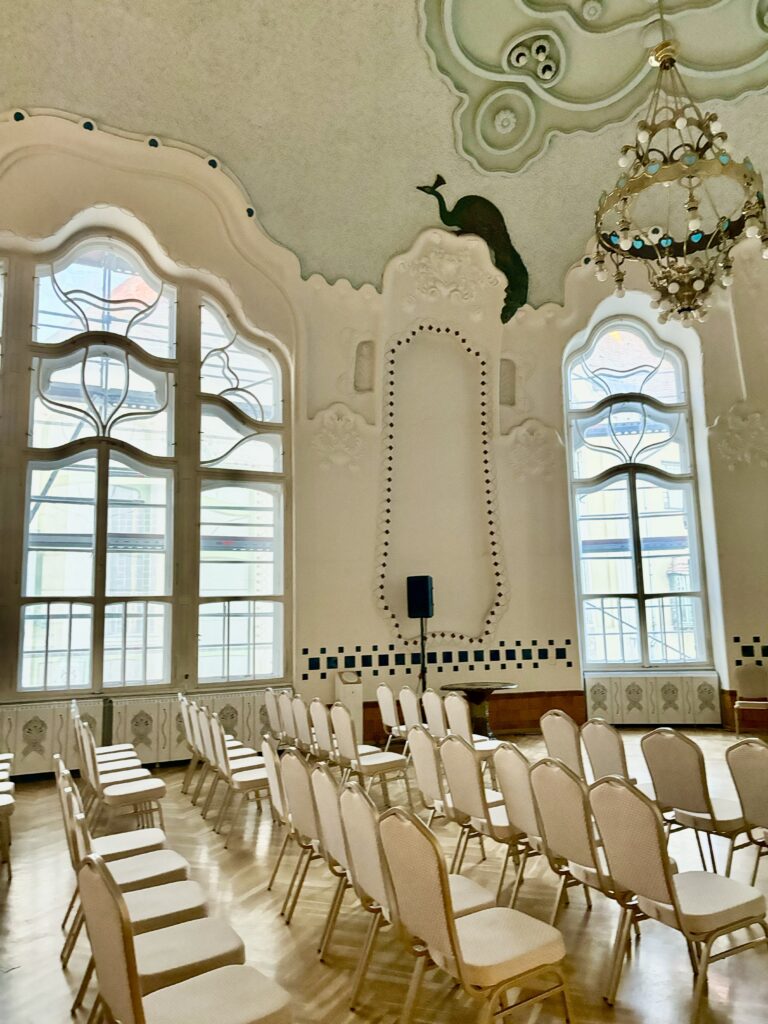

5 PM: Snack at Lechner Kávéház:
From Cifrapalota, you can walk through Szabadság tér, the picturesque central boulevard of Kecskemét. Once the site of a regional market, it remains a point of social congregation, where you can people-watch on any given day or join the crowds during regular weekend festivals. At one end of Szabadság tér is Ödön Lechner and Gyula Pártos’s City Hall, an anchor of Kecskemét’s Secession Art Nouveau beauties. Admire it over a rétes (strudel) and coffee from the nearby Lechner Kávéház.
6 PM: Return to Budapest
Travel from Kecskemét station back to Nyugati. It’s safe to nap on the train...
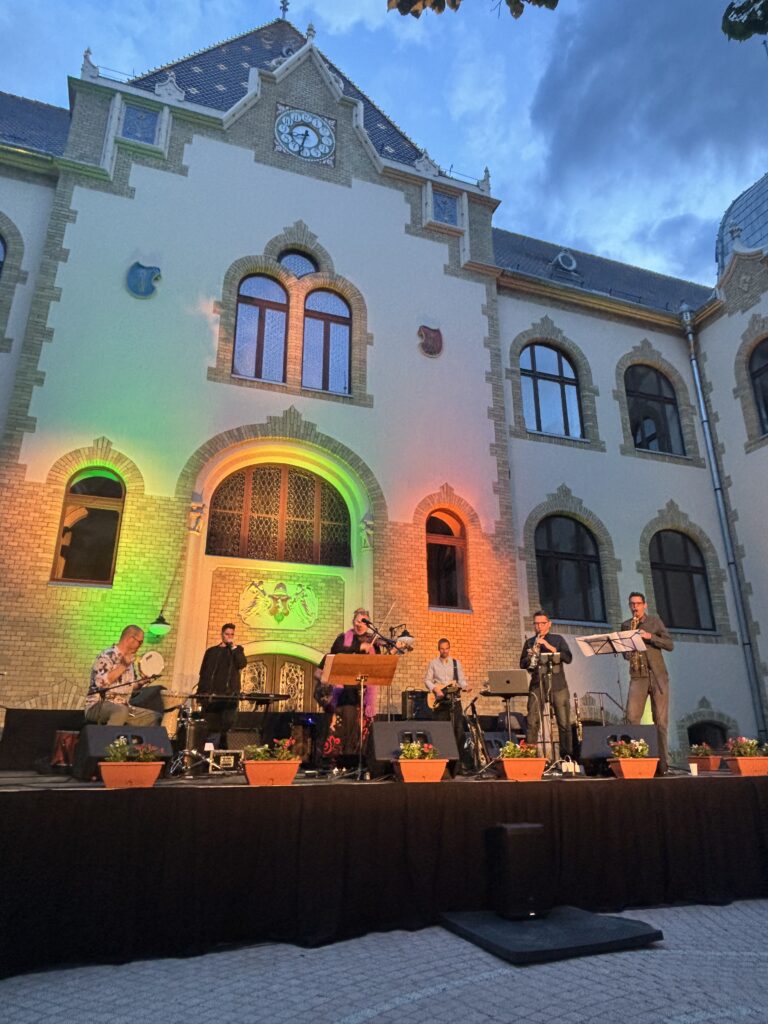
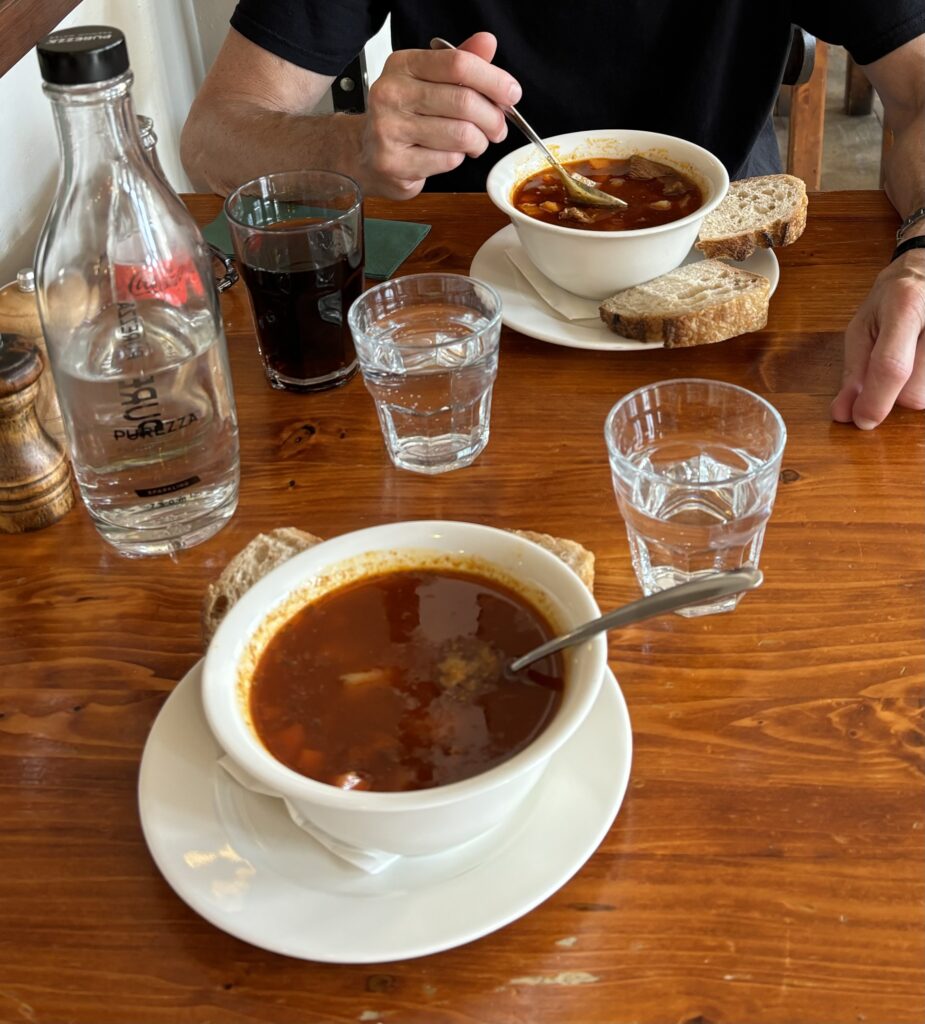
8 PM: Dinner at Kőleves
Situated within Budapest’s vibrant Jewish Quarter, this fantastic restaurant features Hungarian and Jewish-Hungarian cuisine (they serve my favorite gulyás in town), along with a few continental options (the pistachio tiramisu is not to be missed). If the weather cooperates, enjoy the backyard patio, which connects to a lively outdoor garden bar. Reservations are recommended.
Alternatively, stop by a market or pick up takeout and join the sunset picnickers sitting on the low decks of Szabadság Híd (Liberty Bridge).
Extra days: Explore Hungarian Ceramic Manufacturers
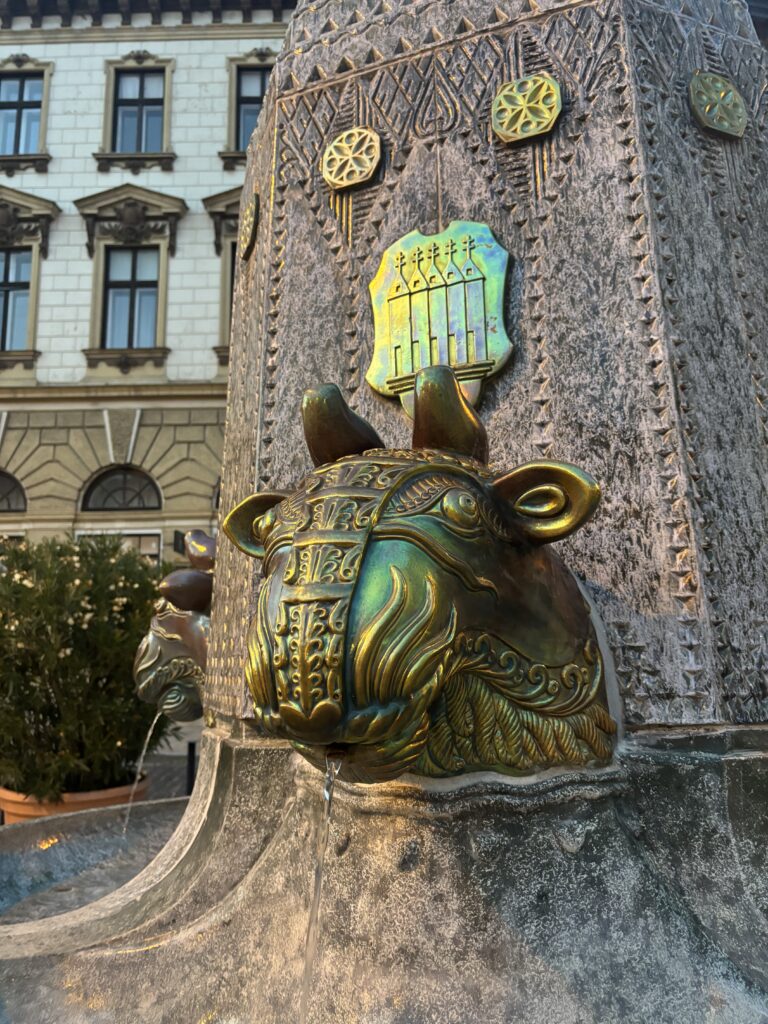
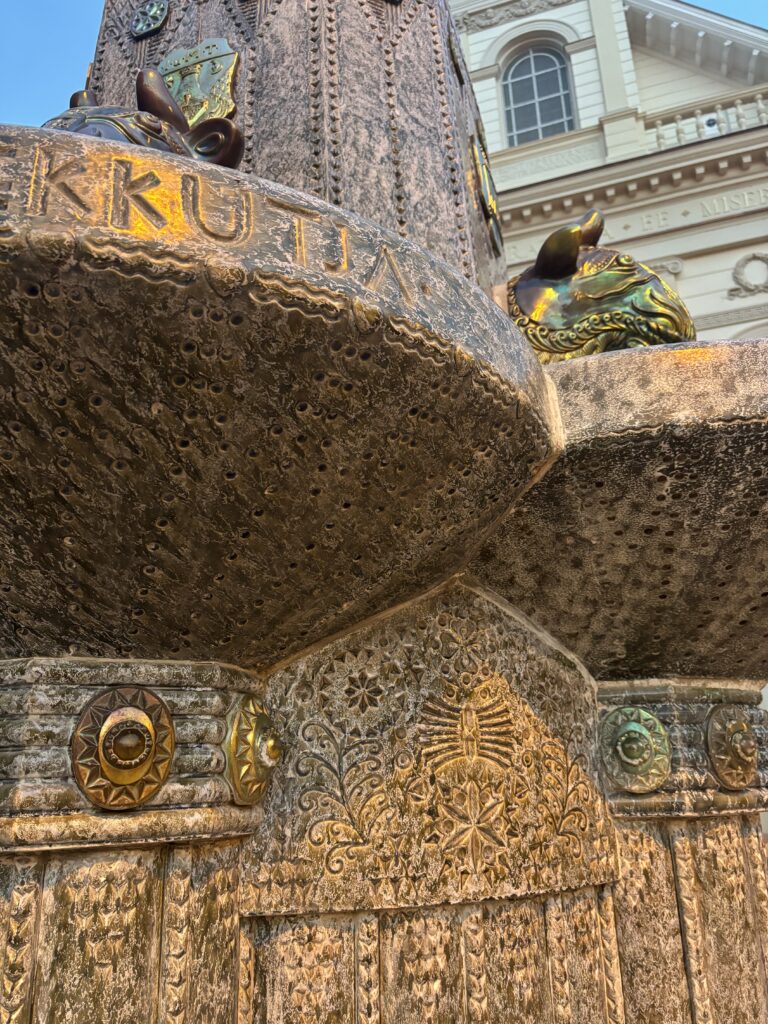

Hungary’s ceramic scene would be incomplete without acknowledging the three most significant ceramic manufacturers who established the dynasty of Hungarian porcelain: Zsolnay, Herend, and Hollóhaza. Rooted in history with classic forms and classic patterns, from dining to decor, each of them remain in the present by collaborating with contemporary Hungarian ceramicists for experimental designs. Though located more-than-a-day-trip outside of Budapest, if you have time to spare, consider traveling to their origin cities for a tour of museum and factory processes.
From a business perspective, Zsolnay, Herend, and Hollóhaza are all the more fascinating (miraculous?) considering Hungary’s toss and turn of politics: reflecting the brilliance and resilience of their nation, they’ve each survived multiple wars, multiple changes of borders, multiple occupiers, nationalization under Communism, and a return to privatization in the 1990s. A testament to the quality of their art - and their technology.
Zsolnay
Zsolnay’s flagship store is located in downtown Pest, but to bolster your understanding of their influence on Hungarian art and architecture, travel to the lovely southern city of Pécs to visit the Janus Pannonius Múzeum’s Zsolnay Museum and the Zsolnay Negyed (Zsolnay Cultural Quarter): the site of the former factory and home of the Zsolnay family.
The entire complex has transformed into a cultural hub, where you can wander open pedestrian streets through exhibitions, galleries, performances, and cafés. For a ceramicist, the highlights include the collections which highlight the Zsolnay family’s history and evolution through clay, and the emphasis on Zsolnay’s technological innovation in oesin (luster) and pyrogranite, a weather-proof architectural ornamental ceramic indispensable to Hungarian Secession / Art Nouveau.
If you can, spend a couple days in Pécs. Rich in culture, abundant in beauty, fueled by good food, all to be enjoyed at a leisurely pace. It’s the kind of city that feels like an exhalation: where people are here less to be tourists and more to enjoy themselves.
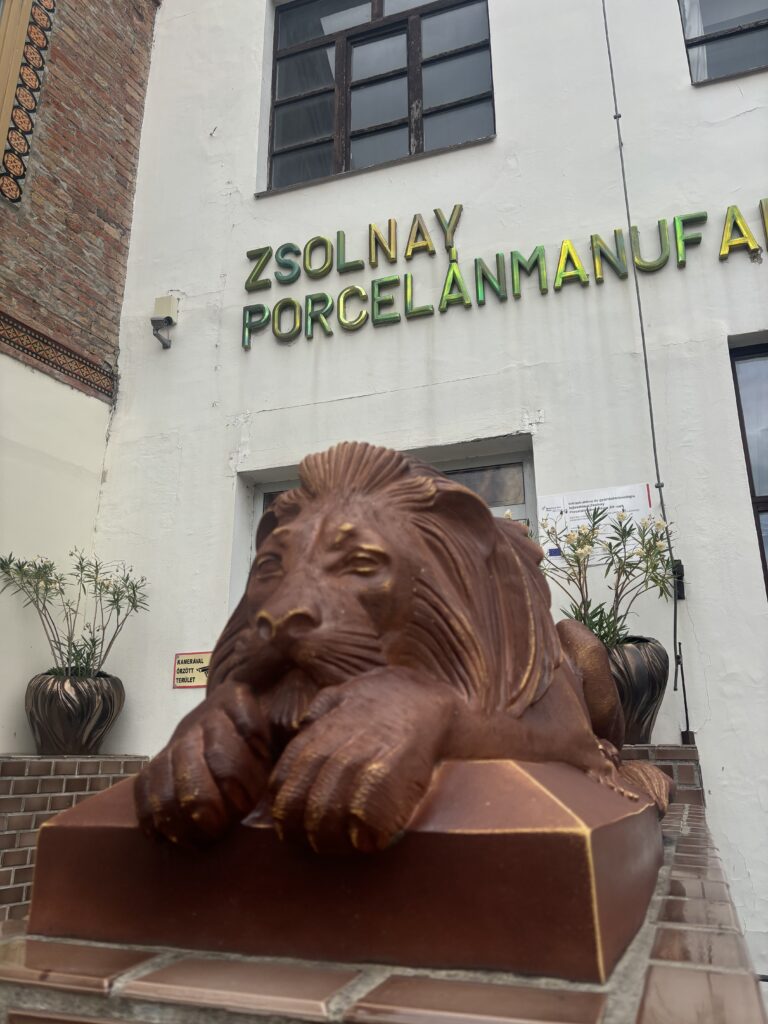
Herend:
Herend is synonymous with high-end, highest-quality, hand-painted, hand-guilded porcelain in Hungary. While in Budapest, visit Herend’s flagship store in downtown Pest (across from Zsolnay’s) to preview their luxury goods. Follow up by traveling to the eponymous town of Herend, where you can tour their museum and an abridged version of their production processes. It’s easy to imagine their dinnerware on the tables of international aristocracy, including those of the 19th century Habsburgs.
Hollóhaza:
Founded in 1777 as a glass manufacturer and touting itself as one of Hungary’s longest-running factories, Hollóhaza began producing porcelain wares in the 1800s using nearby kaolin mines (they still pride themselves on regional materials, from Hungarian clay to water resources to local artisans.) Their museum in their town of origin offers an overview of their products and history.
Thank you to Simon Holpert;Tas Tóbiás of Offbeat Budapest& Vienna; and Stephen Hiltner of the New York Times for contributions to this article; and Attila Kovács for translation services.
Thank you to the Regional Arts & Culture Council (RACC) of Portland Arts3C Grantand the Oregon Arts Commission Career Opportunity Grant with the Ford Family Foundationfor funding.
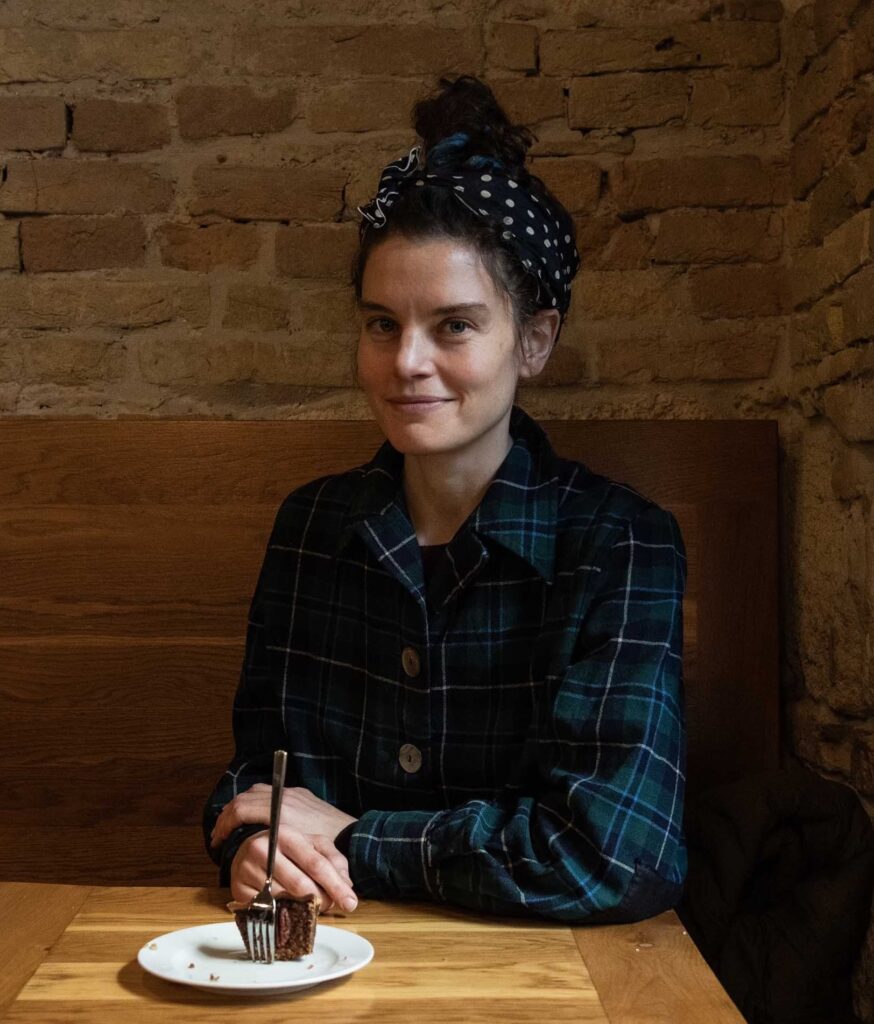
Emelia Hiltner is a potter, puppet-maker, and storyteller from Portland, Oregon. Visit her website.
Want to see our next ceramic guide to a city? Tokyo, Japan and Dublin, Ireland are coming next! You too can feature ceramic destinations in your city. To share a guide, event, exhibition news, or research, visit our CONNECT PAGE for more information!
Don't forget to subscribe to our newsletter for updates on all things ceramics!
